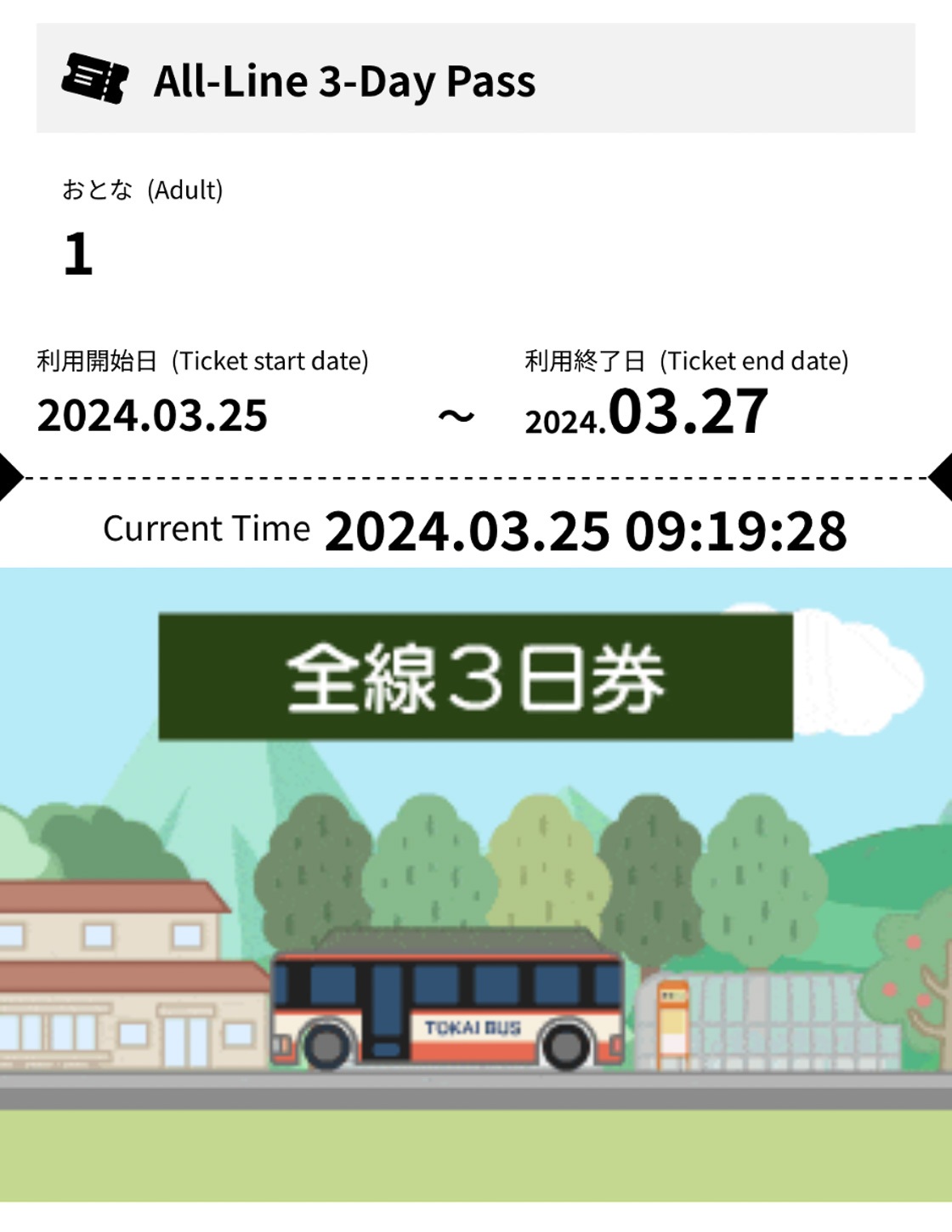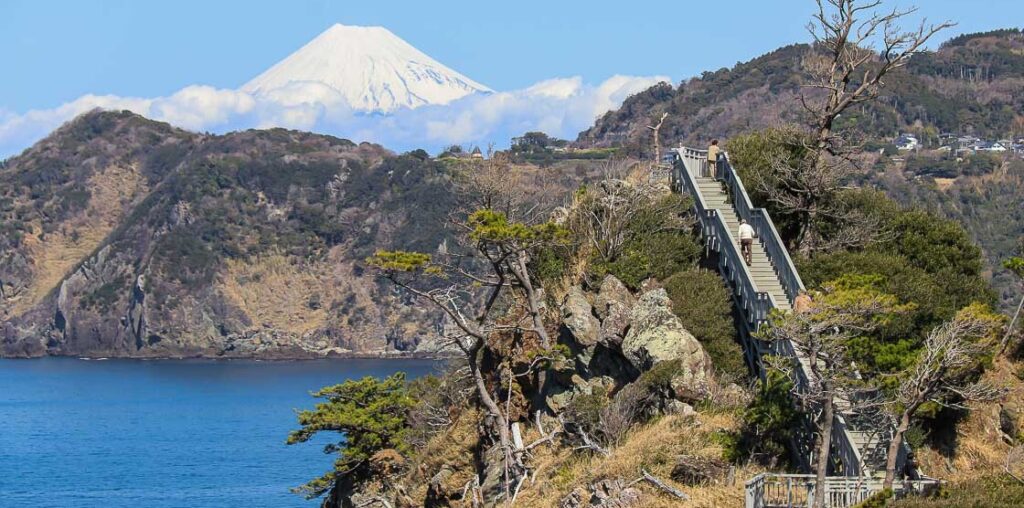Located on the western side of the Izu Peninsula, the town of Nishiizu is an off-the-beaten path destination that is fitting for those who want to be surrounded by nature. The Pacific Ocean makes up the coastal side of Nishiizu, and the town’s interior is mountainous. When it comes to the outdoors in Nishiizu, visitors can enjoy the numerous beaches, coastal walks along the beach and sea cliffs, and hot springs. Then, it is also a must to enjoy the local cuisine, which includes fresh seafood, wasabi that is grown in the mountainous interior as well as learn more about katsuobushi – the foundation of Japanese cuisine – at one of the homes of bonito in Japan.
In this article, I took a leisurely three day trip to Nishiizu by public transport from Tokyo. Over three days, I got to know this beautiful off-the-beaten path destination, where I could soak in the sun and sea, and get some respite from the city.
Nishiizu is about 3-4 hours southwest from central Tokyo by public transport, and detailed access information to and around Nishiizu can be found in the access section below.
Day 1: Dogashima and its celebrated views
Located in the southern end of Nishiizu, Dogashima is one of the famous coastal areas in the Izu Peninsula known for its dramatic coastline, tall sea cliffs and numerous uninhabited islands. Noribama, the beach in Dogashima, is popular in the summer for its scenery and calm waters. In addition to all these good things going for it, Dogashima is a major stop along the bus lines in the Izu Peninsula, which makes it a convenient place to stay and explore Nishiizu.
I arrived in Dogashima around lunch time and headed straight to the centrally located Tourist Information Center, which is beside the bus stop. Besides sightseeing information, the Tourist Information Center also provides a free cloak service (9:00 to 17:00), which I found to be useful to travel luggage-free in the vicinity before going to my accommodation. I proceeded to leave my bag there before going for lunch.
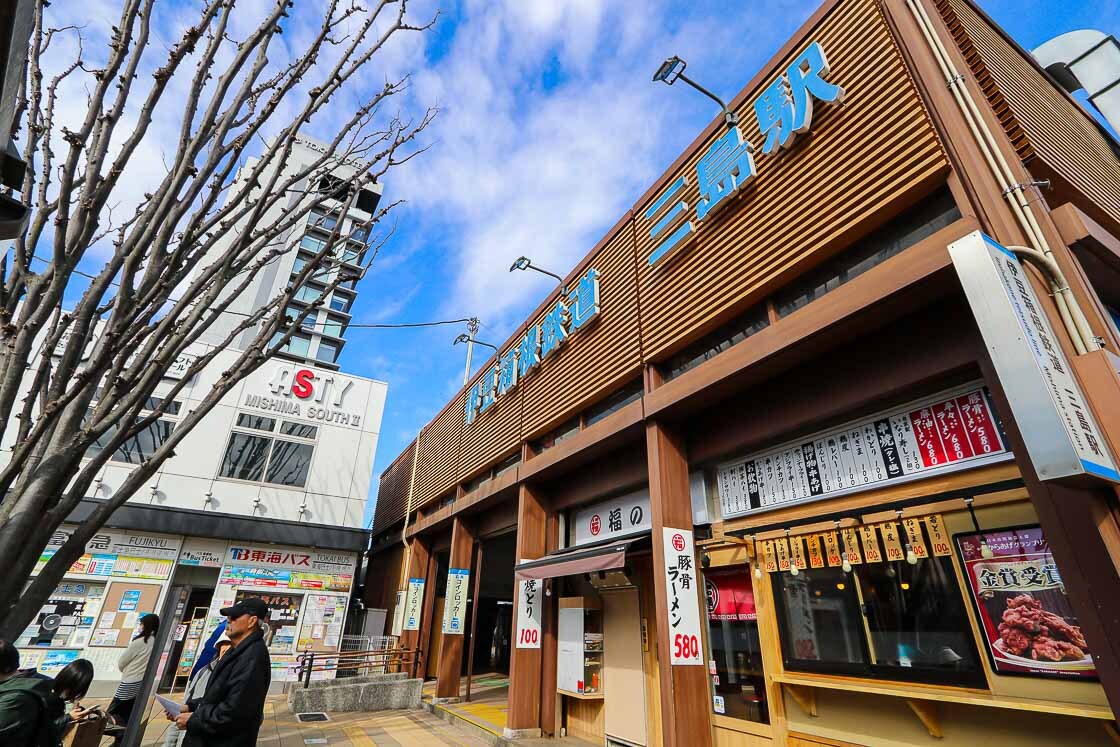
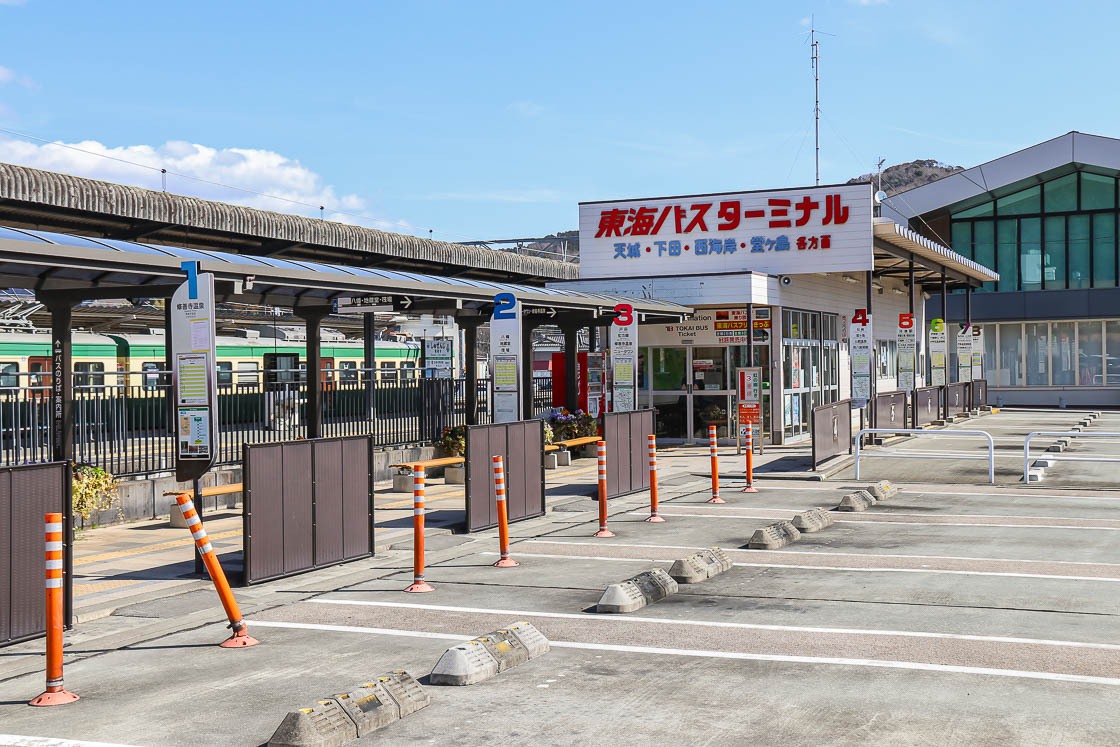
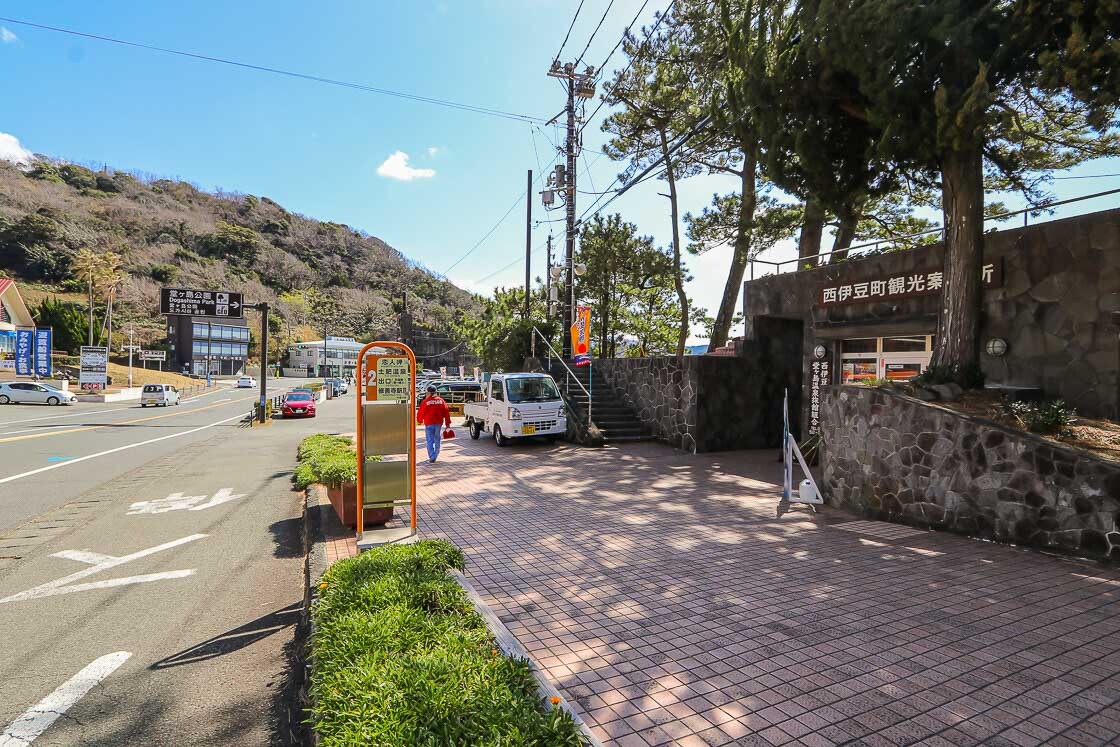
I headed to Sebama Sushi, which is across from the Tourist Information Center, for lunch. Seafood typically makes up one of the main cuisines in a coastal region, and it is no different in Nishiizu, whose western edge meets the Pacific Ocean. Local and seasonal seafood is available at Sebama Sushi, and I ordered the daily lunch set.
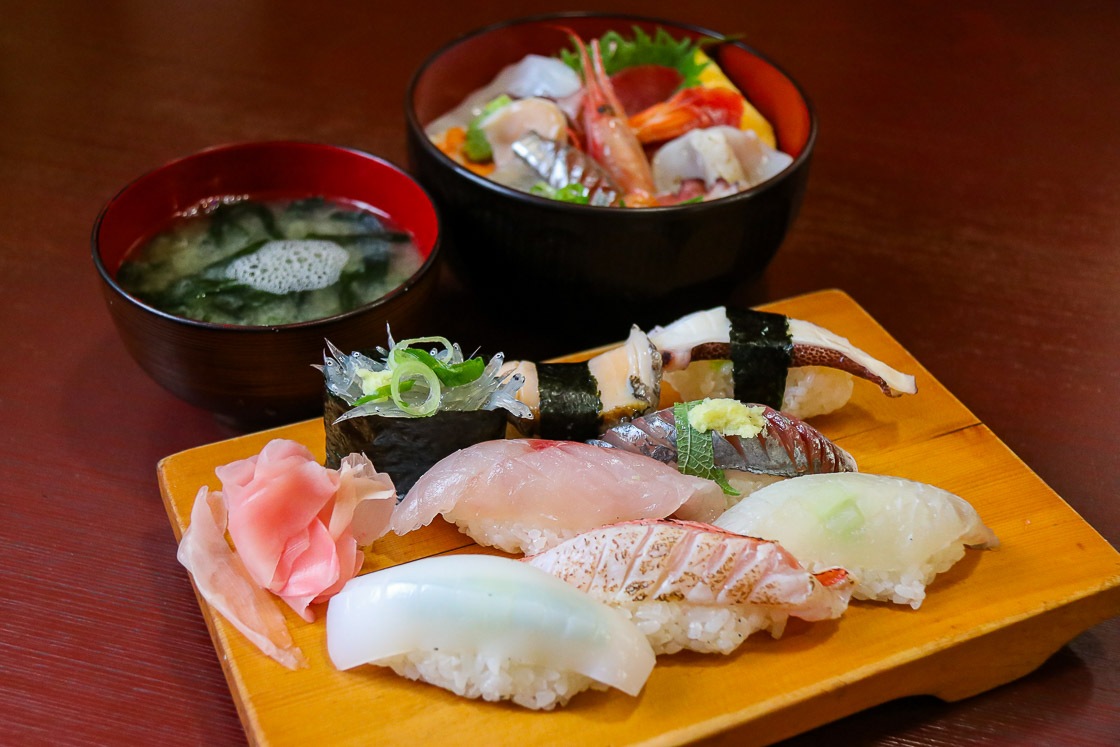
Following lunch, I got to exploring the coast. There are two ways to appreciate the nature in Dogashima, by taking a sightseeing cruise or on foot along an easy hiking course. Doing the two allow one to experience the best of both worlds, and their starting points are also just steps from the Tourist Information Center. I went for the sightseeing cruise first, which lasts about 20 minutes and takes visitors along the coast and into Tensodo, one of the sea caves. Back on land, I followed the short circular walking trail from the pier, during which I got to look down into the same sea cave I entered on the cruise.
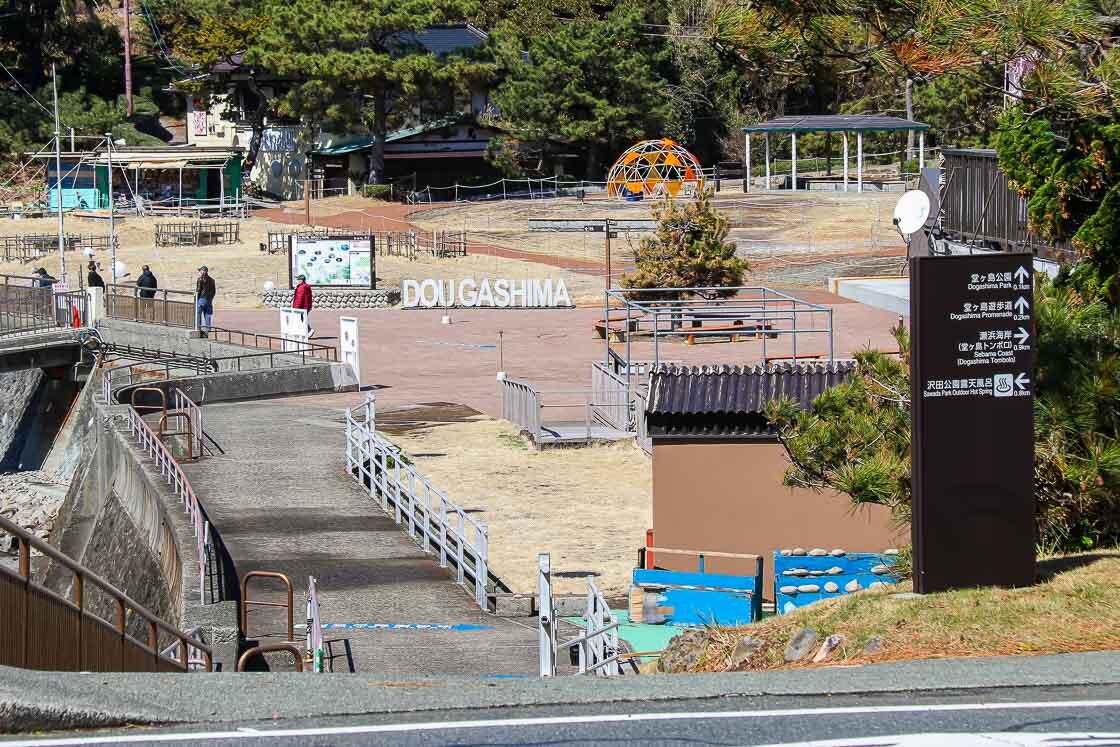
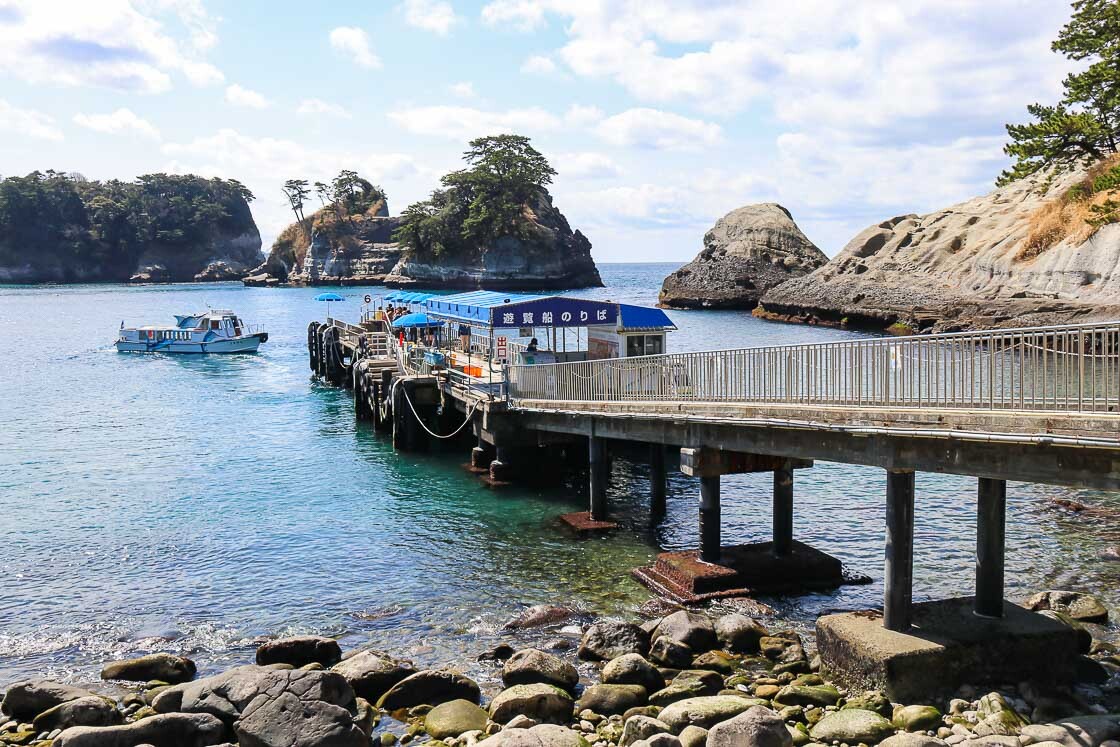
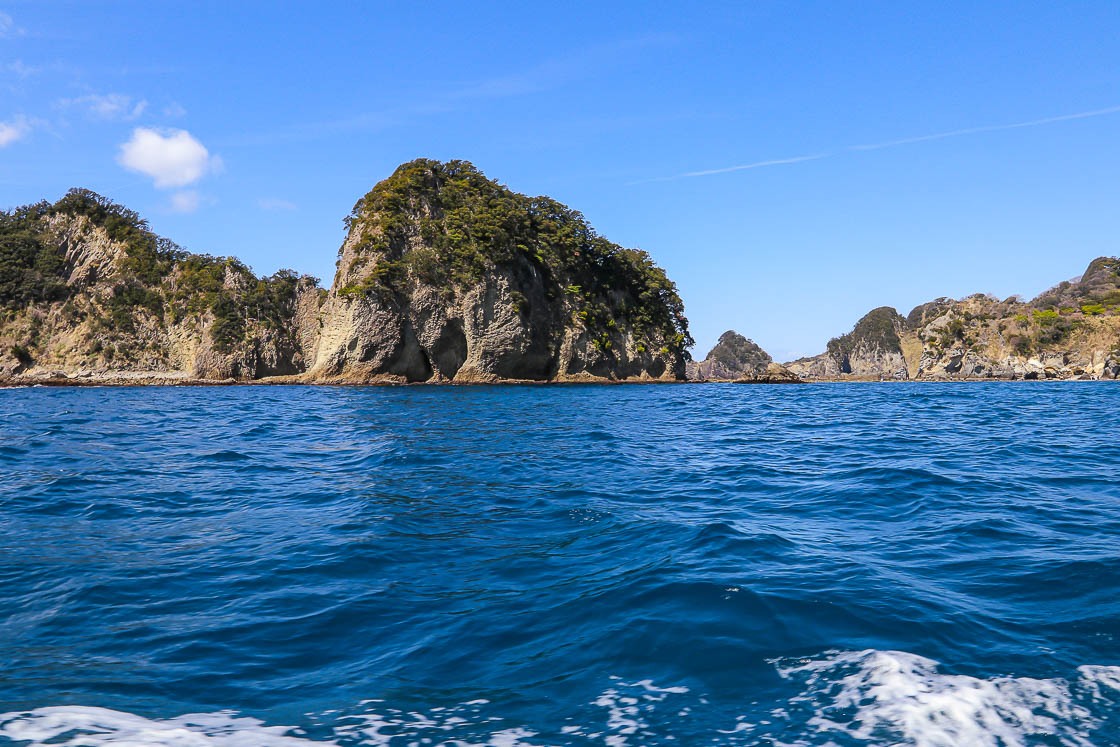

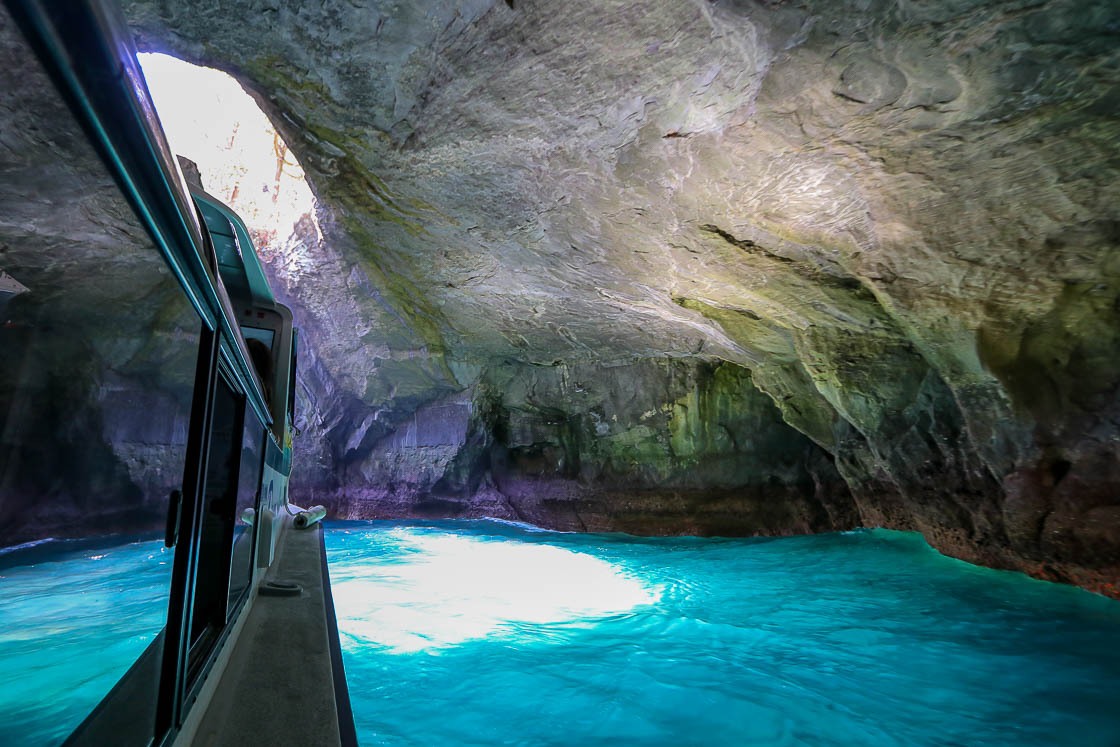
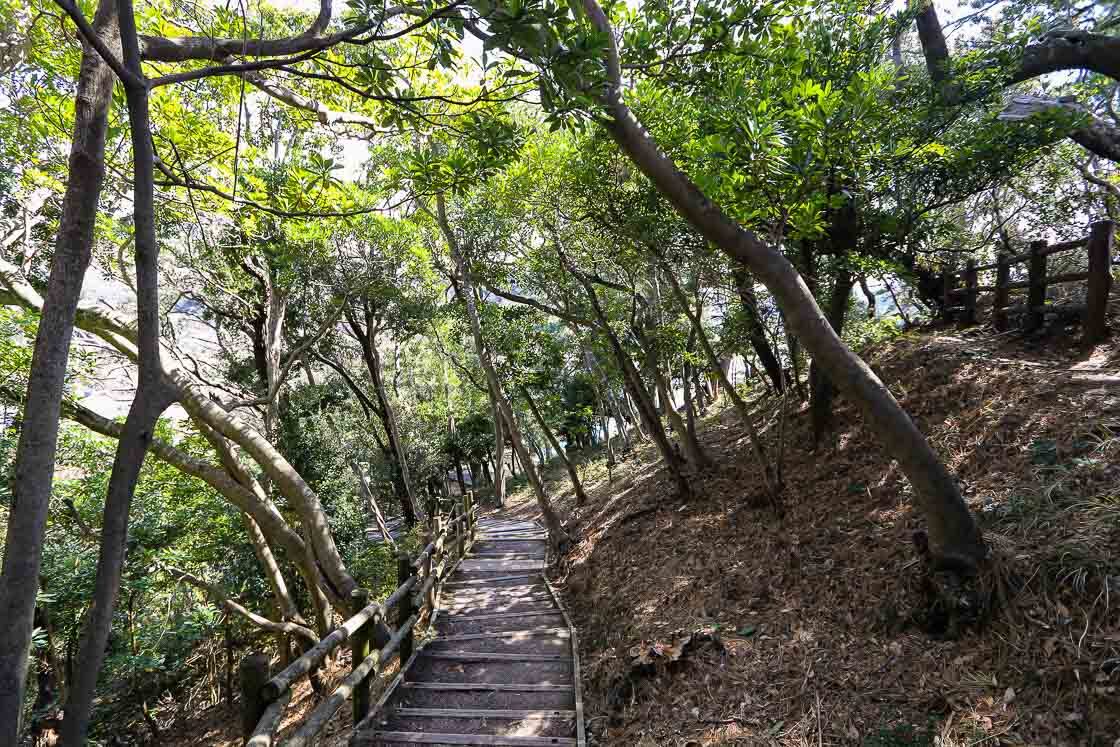
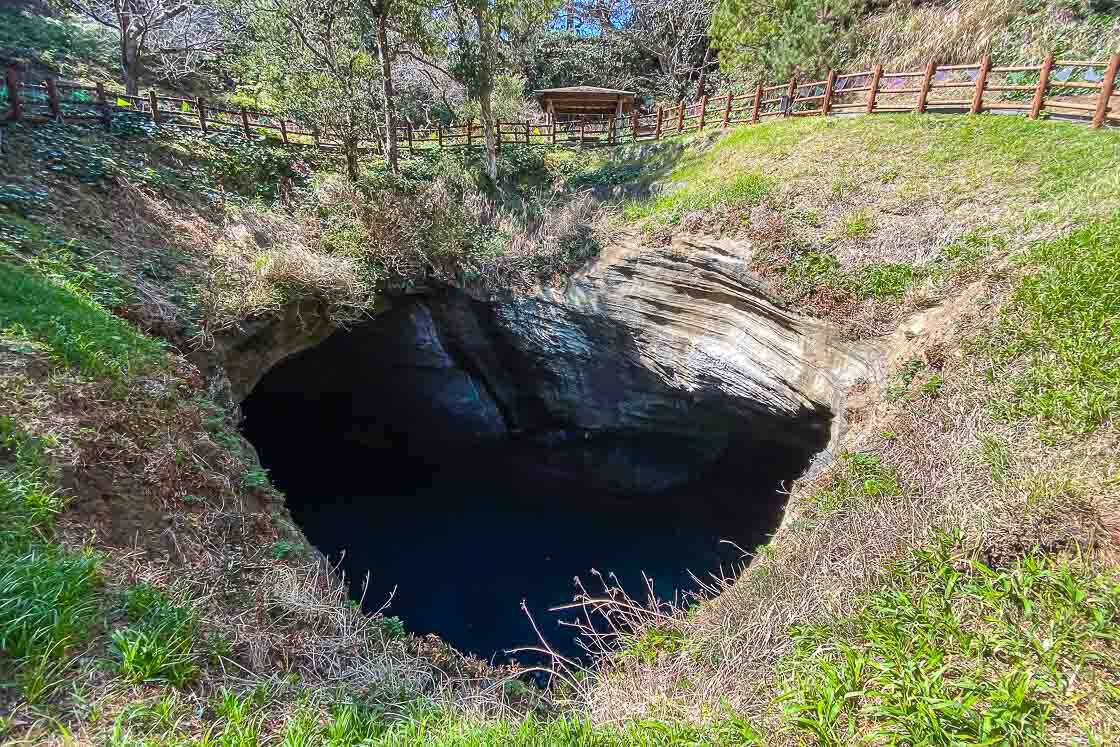
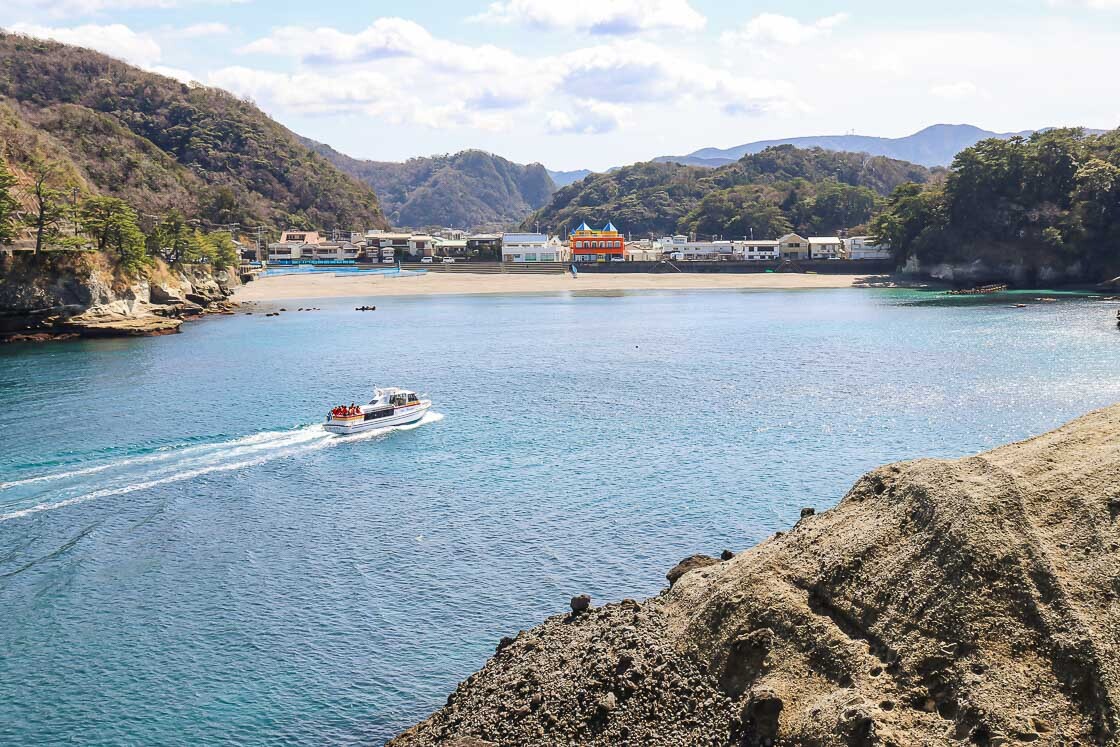
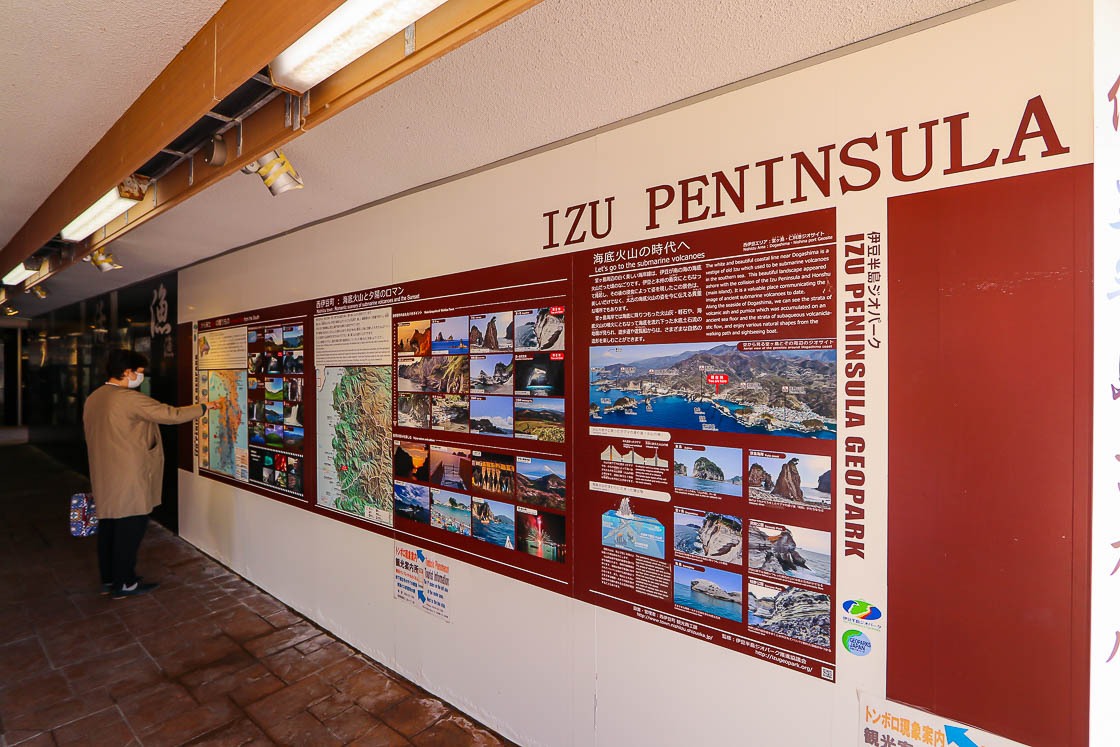
After that nice coastal exploration, I picked up my bag and headed to Dogashima New Ginsui, my hot spring accommodation for the next two nights. The hotel is not far from the Tourist Information Center, and a free pick up service from the Dogashima bus stop is available between 14:00 and 18:00. The pick up service can be arranged by phone on the day or in advance when making your hotel reservation.
Nishiizu is known for its sunsets, and guests at Dogashima New Ginsui can enjoy watching the sun set from their rooms or the spacious lounge area. As I had some time before sunset, I decided to enjoy the hot spring baths first. The outdoor baths face the ocean, and it was a treat to soak in the bath while enjoying the ocean views and listening to the sound of waves crashing.
Dinner was included in my accommodation plan, and on the menu were once again, local and seasonal ingredients. I feasted on the local seafood, which was served raw, steamed, simmered and grilled.
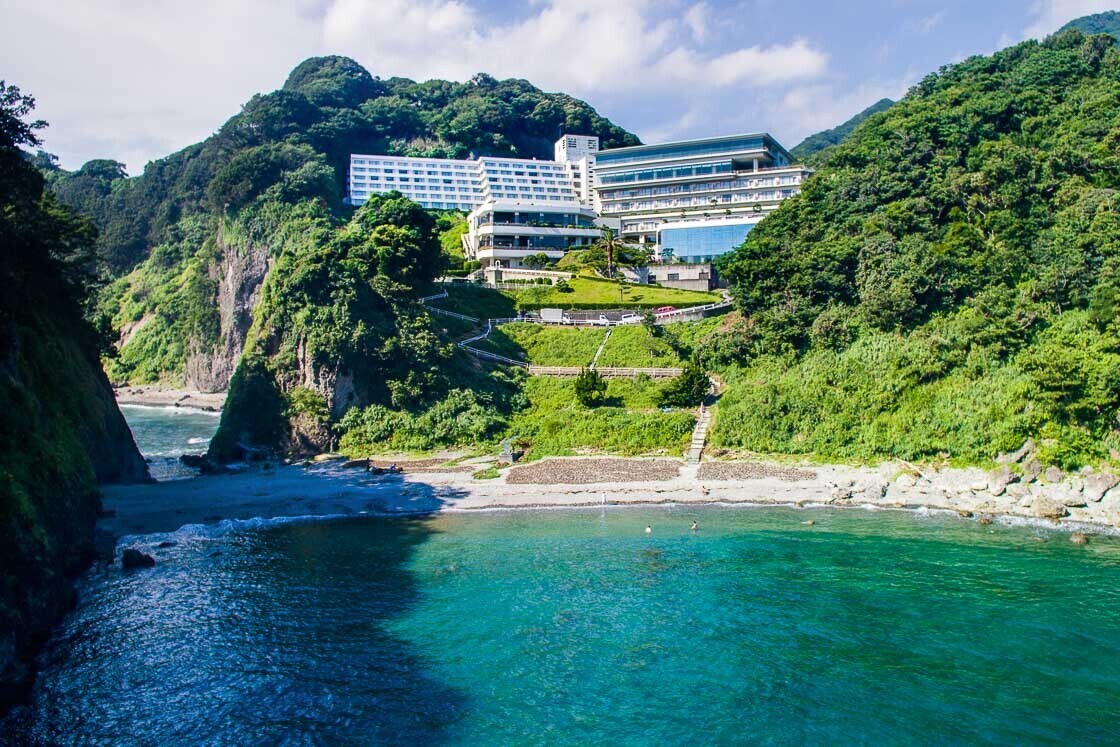
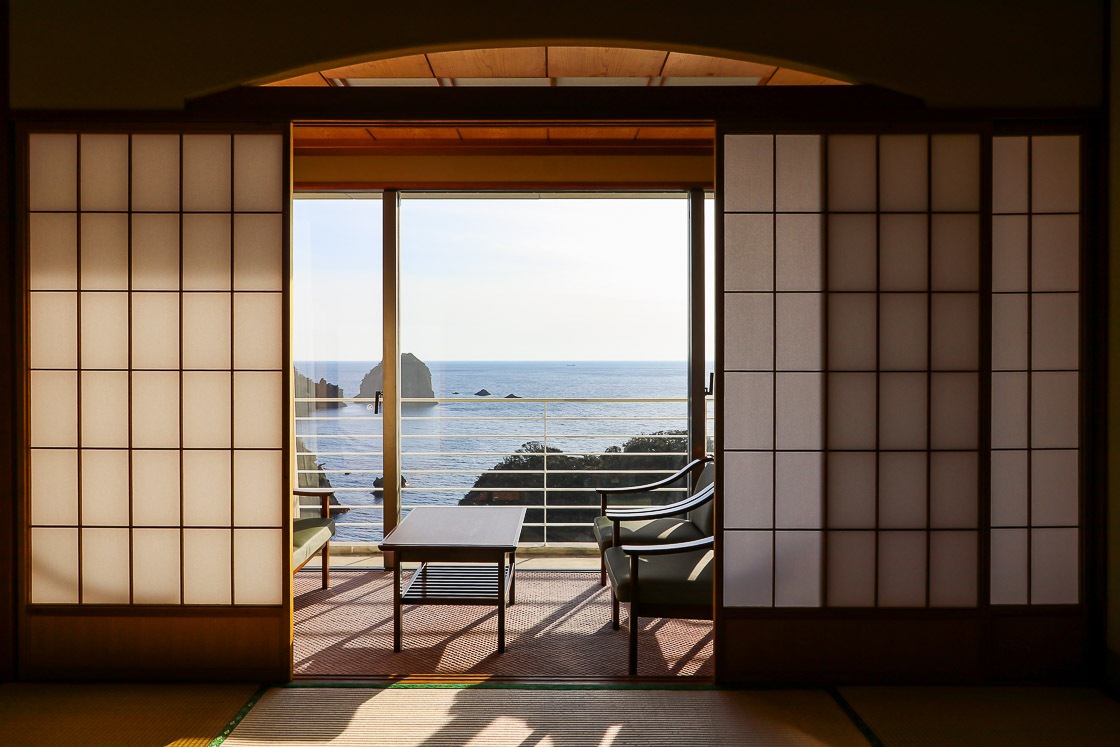
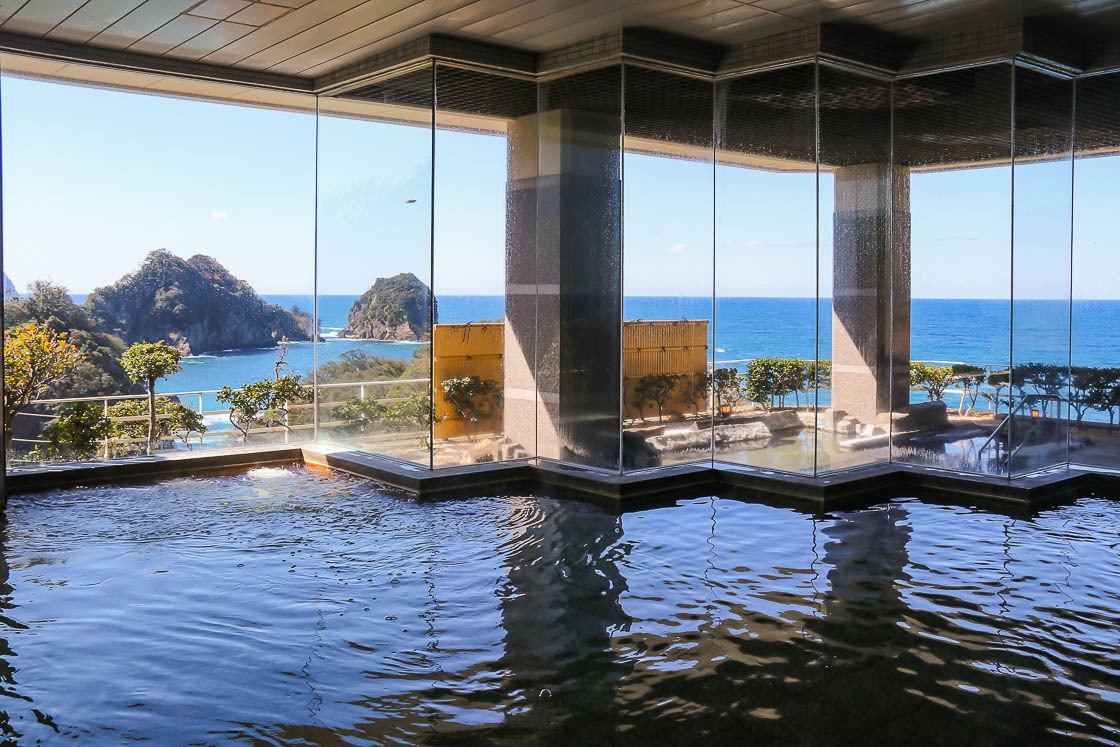
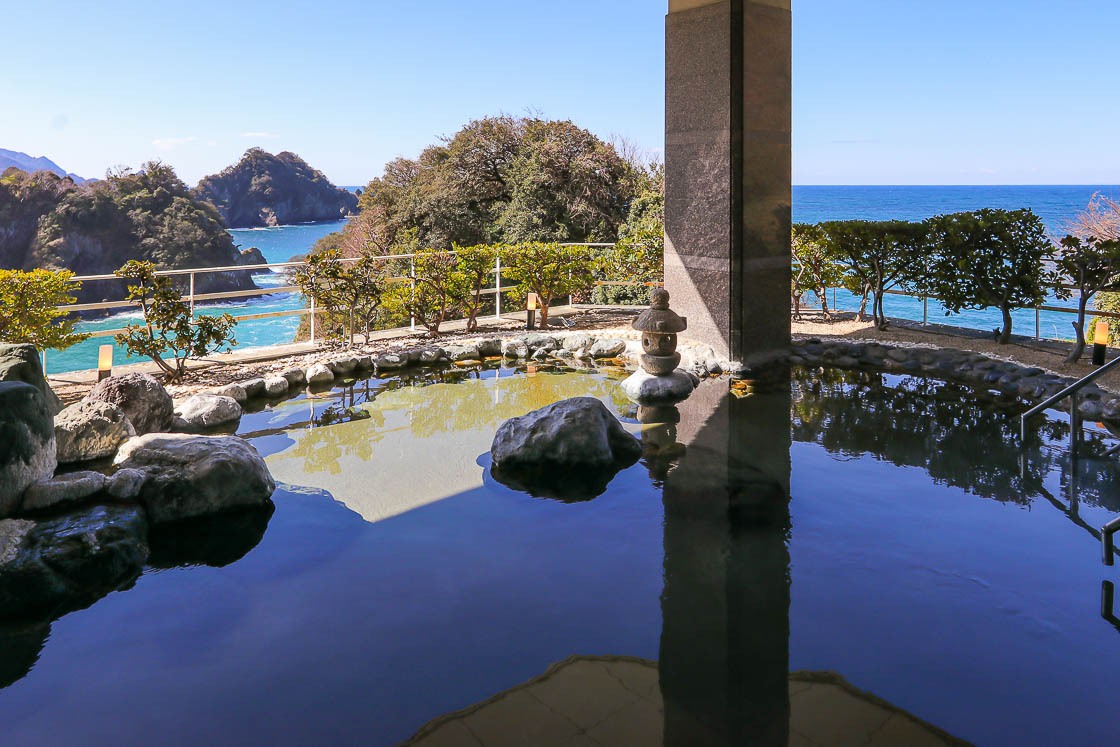
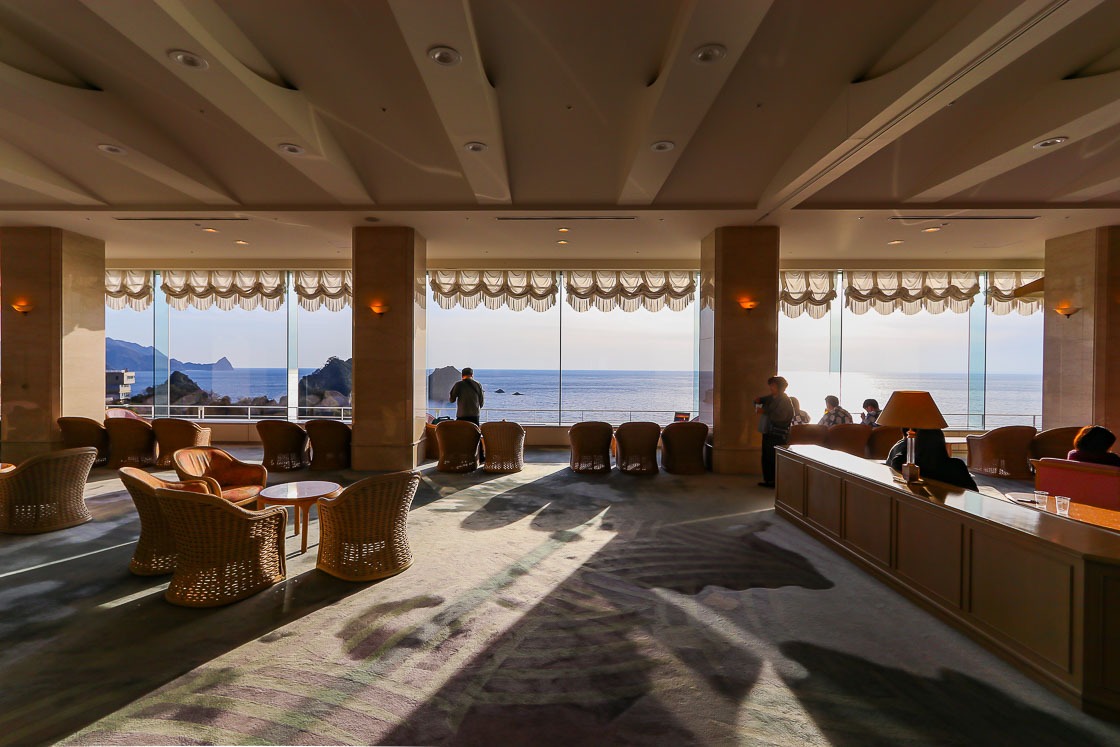
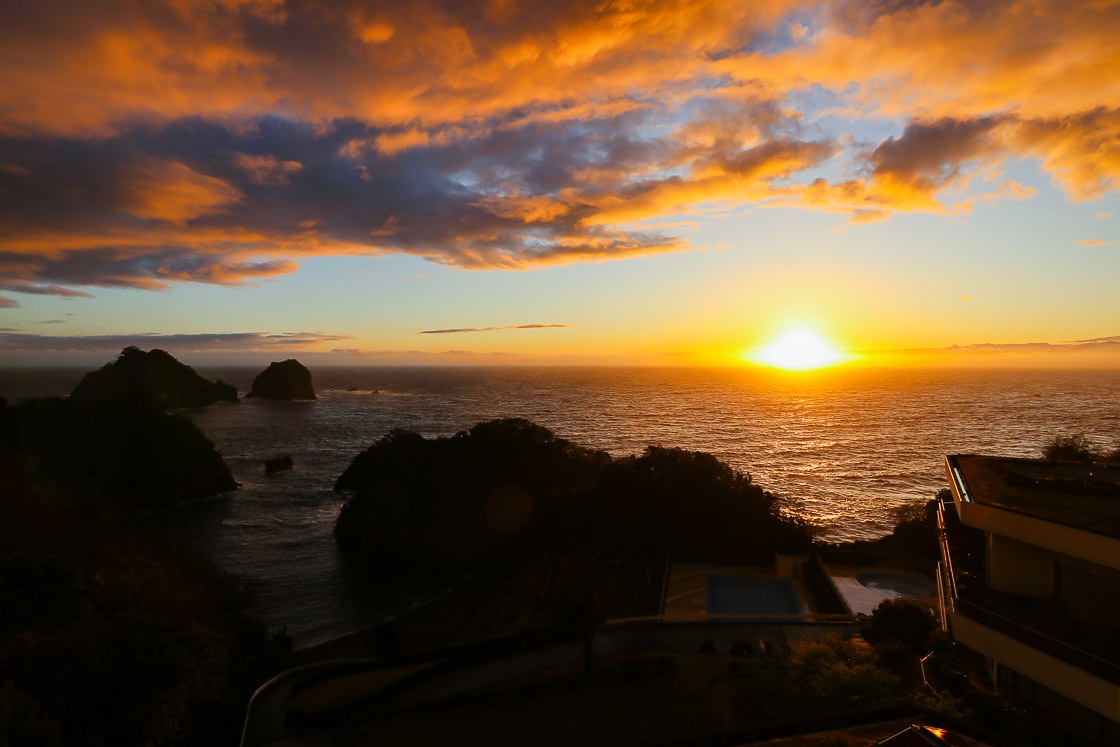
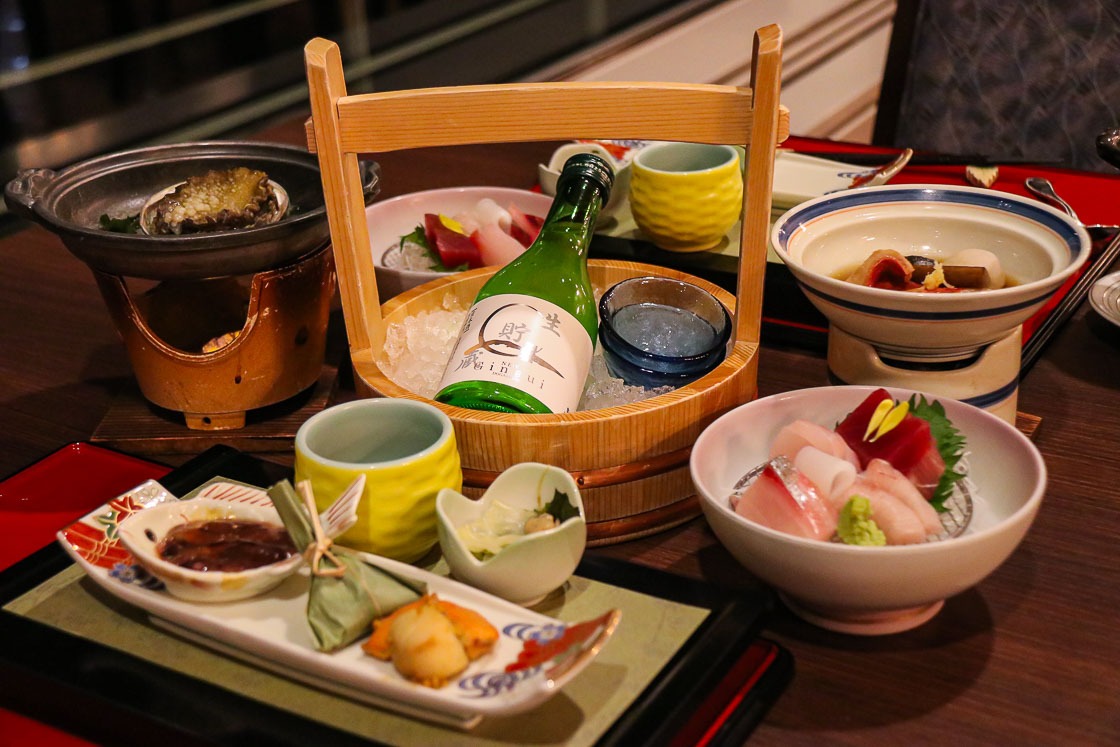
Day 2: Bonito and a coastal hike
After a buffet style breakfast at my hotel, I took the bus northwards to Tago, a small fishing town known for its bonito fishing and katsuobushi production, where I would spend the day. Over a hundred years ago, there were over 40 bonito fishing boats in Tago. While no bonito fishing boats remain today, a few businesses that process bonito the traditional way still remain. I visited Kanesa Katsuobushi, which has been around since 1882, in Tago, to learn more about katsuobushi – the essence of Japanese cuisine. Katsuobushi is typically used to make dashi stock, which is then used in a multitude of Japanese dishes.
Processed bonito in its various iterations has been a part of Japanese cuisine for about 1500 years, and shiokatsuo – salt-cured bonito (skipjack tuna) – is one of the first iterations of katsuobushi. Without shiokatsuo, there would be no katsuobushi as we know of it today. Modern katsuobushi has a comparatively short history of only 350 years originating during Japan’s feudal period. Nishiizu is the only place in Japan where shiokatsuo is still being made, and in Tago, we can see and taste both shiokatsuo and katsuobushi.
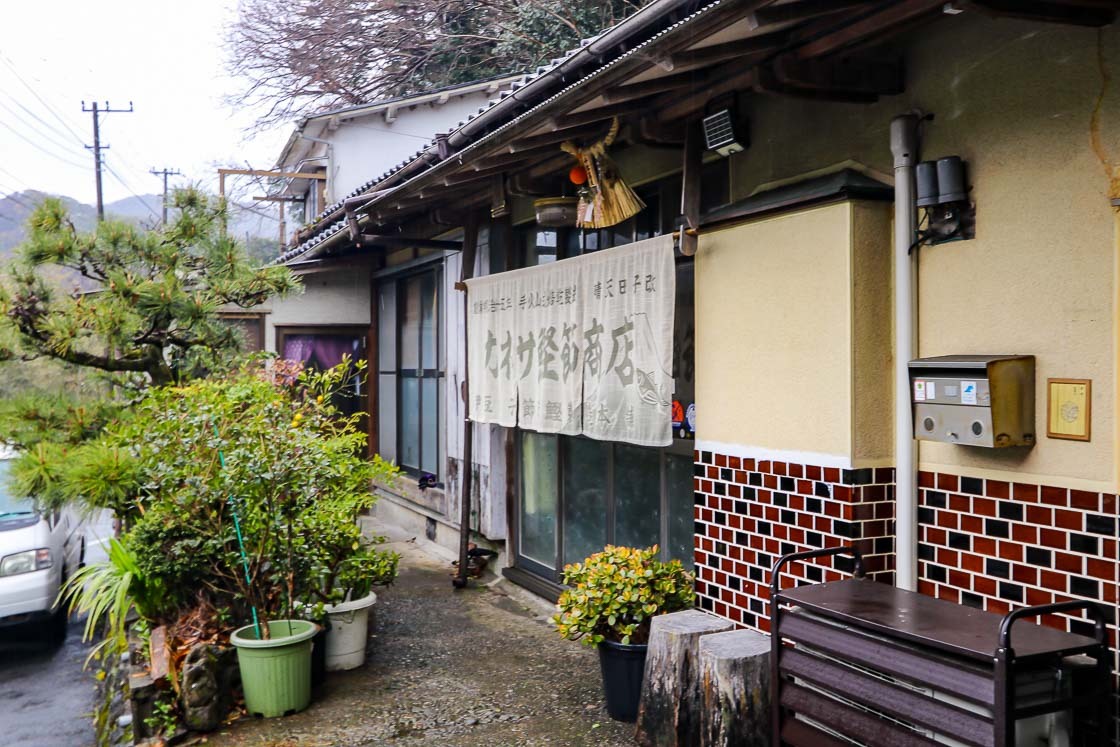
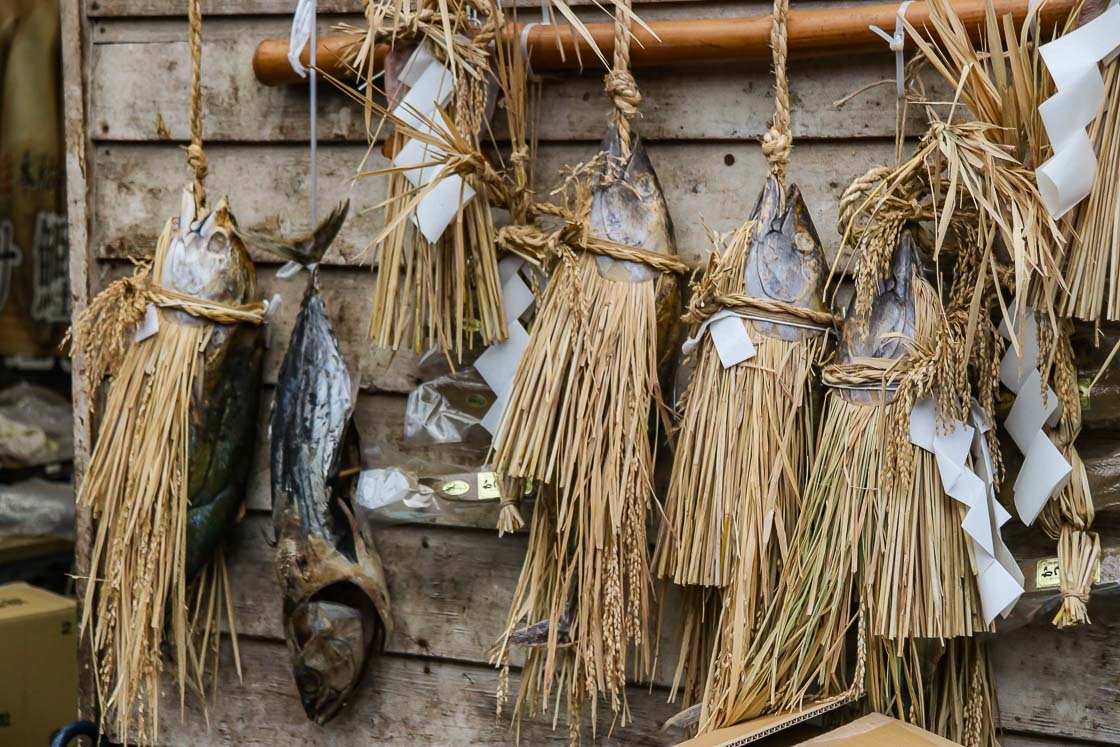
My visit to Kanesa Katsuobushi started with a tour of the premises, where I saw the staff preparing bonito, some to be made into shiokatsuo, others to be made into katsuobushi. Afterwards, the owner gave a small lesson on the history of katsuobushi and demonstrated the finer points of shaving katsuobushi. It might not be immediately obvious, but katsuobushi is the hardest food in the world. Shaving katsuobushi to get nice long, thin strips requires skill and a very sharp blade. A specialized katsuobushi shaver is used for this purpose.
Katsuobushi is bonito that has been fillet and smoked, then covered in koji mold and left to ferment. Making katsuobushi at Kanesa Katsuobushi takes approximately six months, and it is a repetitive process that includes multiple smoking and resting periods, followed by multiple fermenting and sunning periods. Tago-made katsuobushi is smoked with local wood, which gives it a particular smell unique to the region compared to commercially made ones.
It was my first time visiting a katsuobushi factory, and I found the entire experience to be very educational and interesting. All in all, I was glad to have this opportunity. After that session at Kanesa Katsuobushi, I started to notice all signs and products relating to shiokatsuo and katsuobushi in Nishiizu, when before I did not notice them at all.
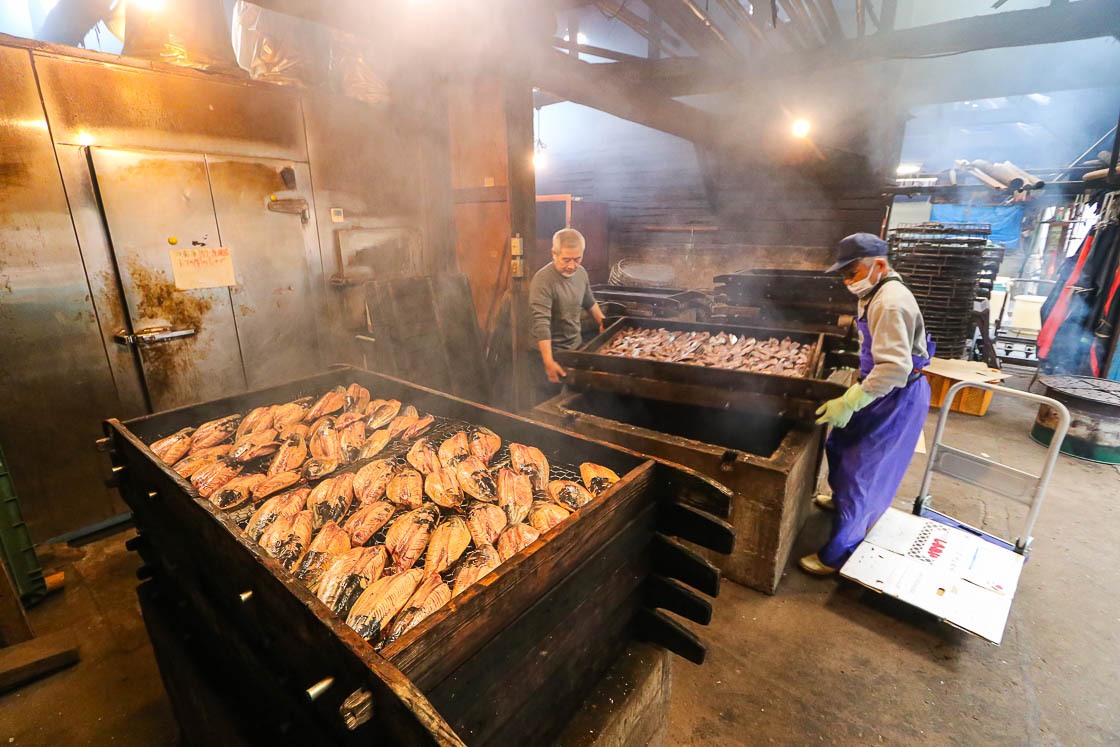
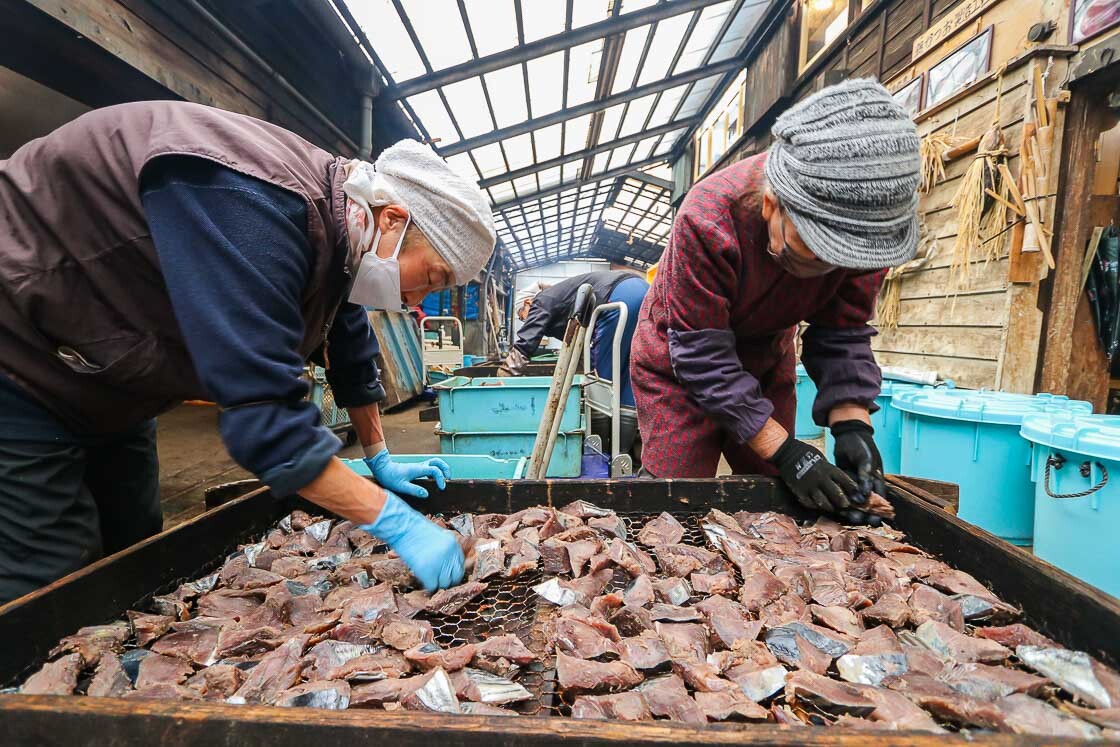
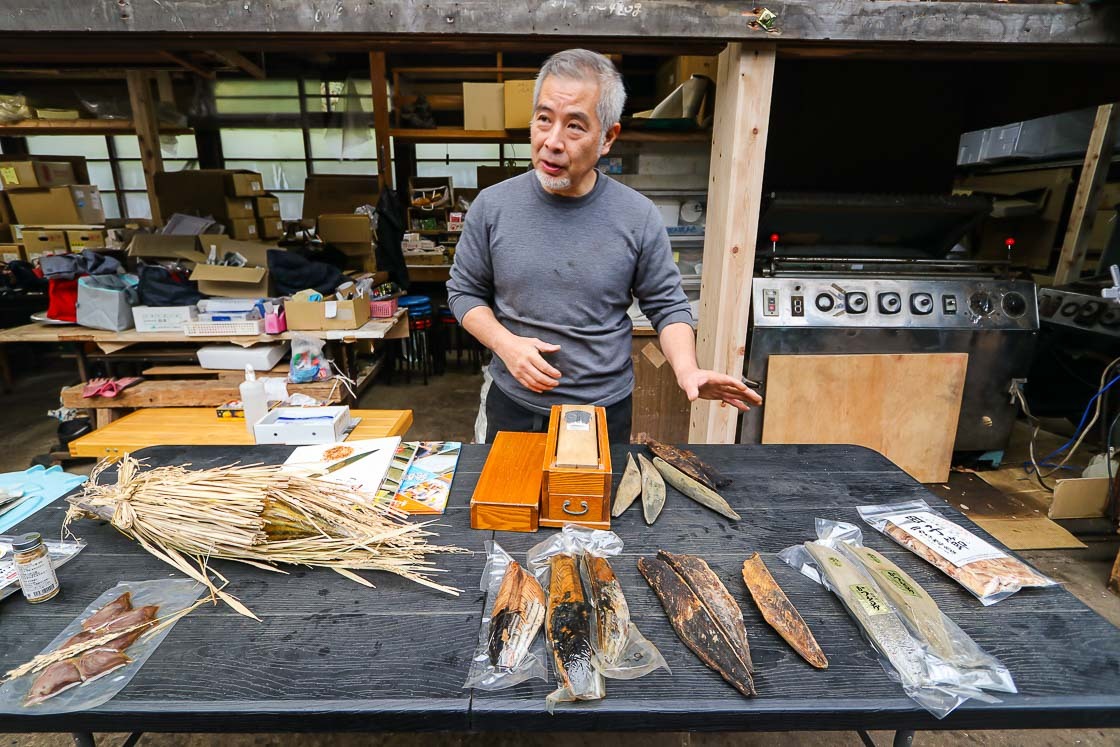
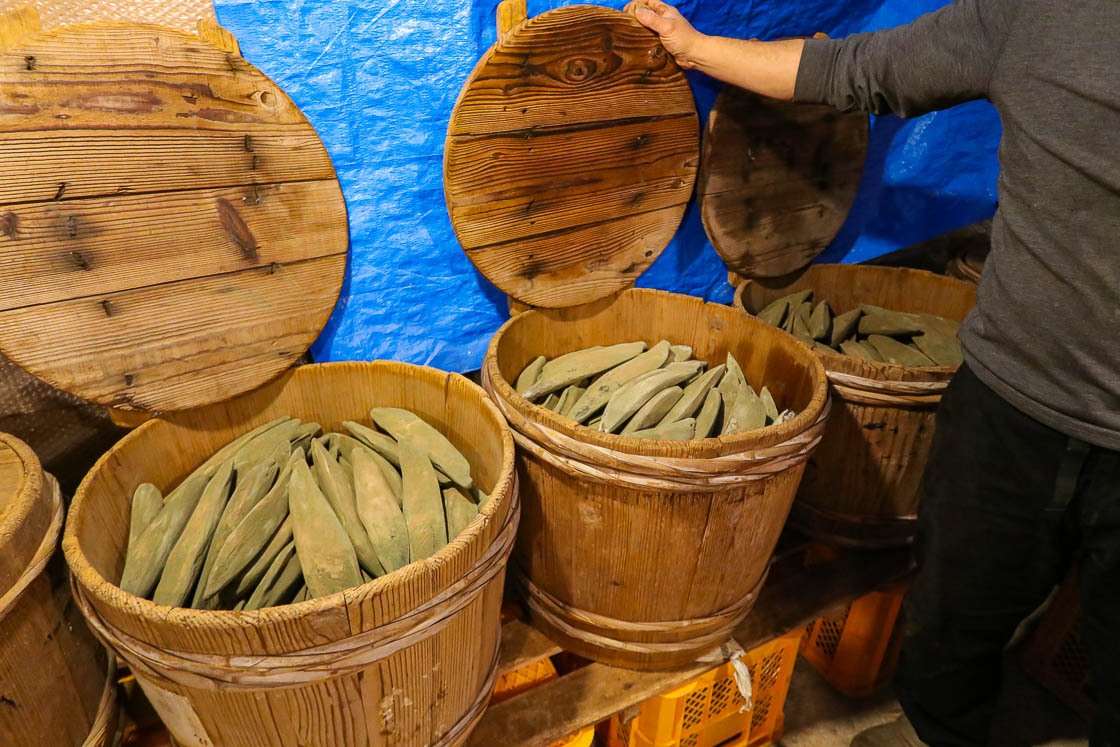
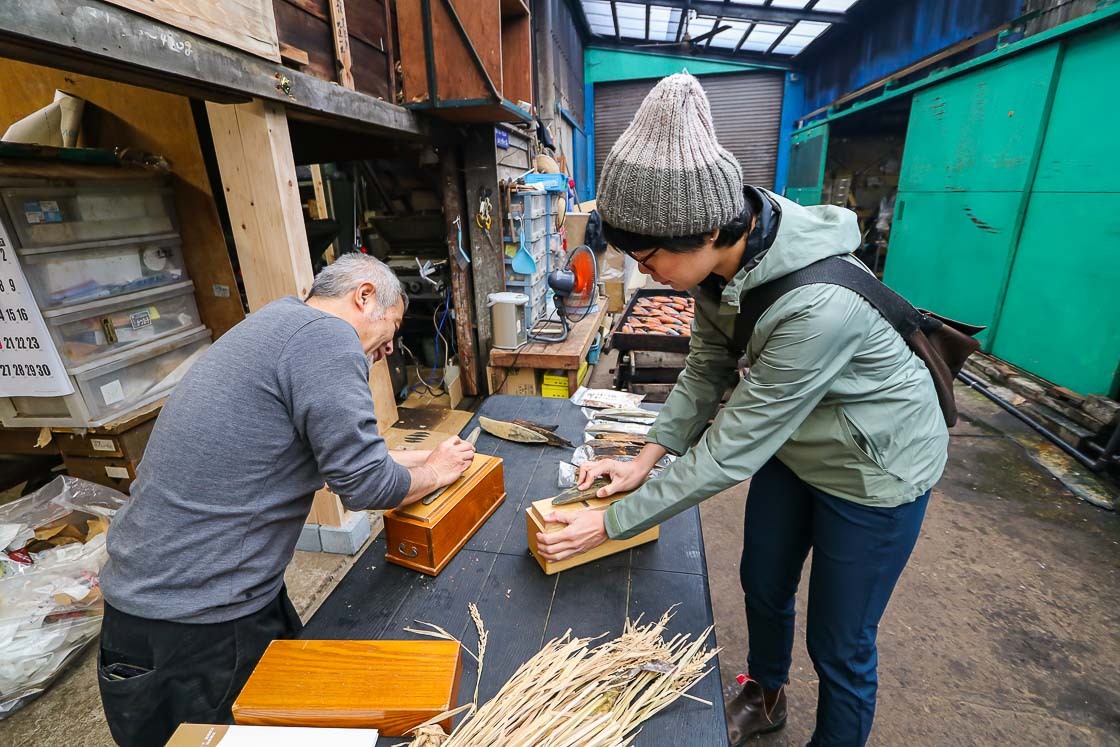
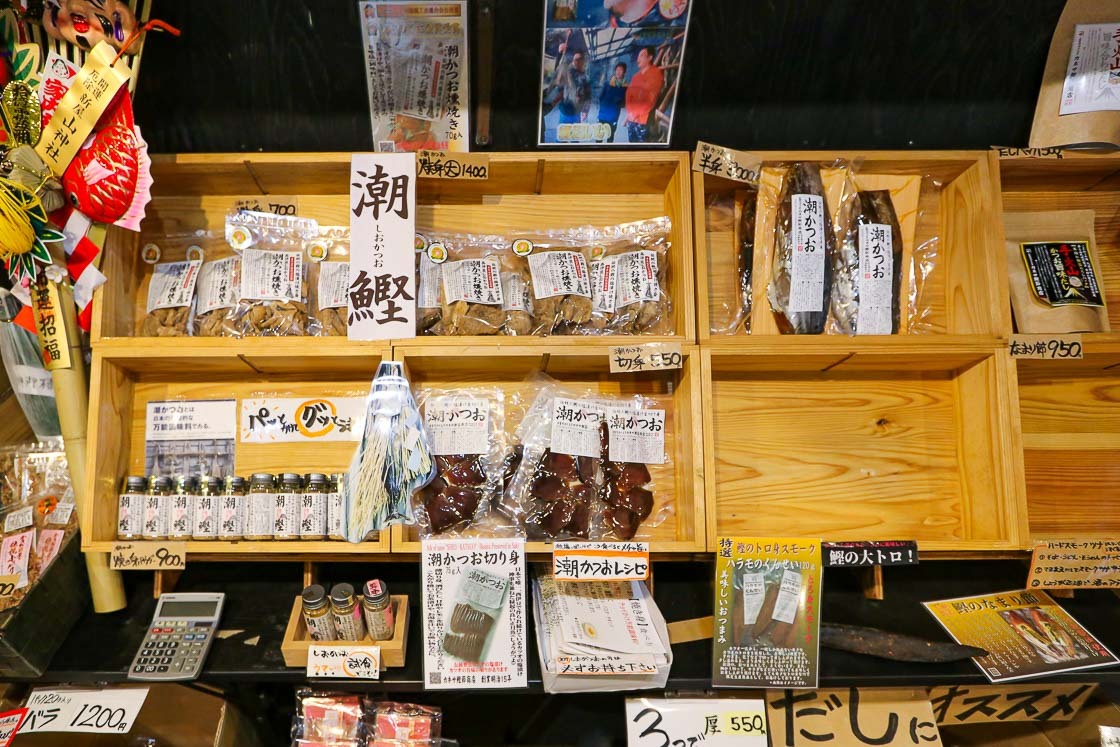
I spent the rest of my afternoon in Tago, taking about 40 minutes to walk from Kanesa Katsuobushi to Tagose Beach through the fishing port. Tagose Beach is another popular beach in Nishiizu that is suitable for swimming and snorkeling. However, it was a little too early for beach activities when I visited, and I opted instead to go for a coastal hike along Cape Tomyogasaki to Futo Beach on the other side. The hike from one beach to the other took about an hour, and provided excellent views of the cliffs and the ocean. Unlike the easy walk I did at Dogashima the day before, this hike at Cape Tomyogasaki requires good walking shoes as it can feature slippery sections after rain.
From Futo Beach, it was an approximately 15 minute walk to the Tagoiriguchi bus stop from where I caught the bus back to my accommodation. A soak in the hot spring baths was waiting for me once again at the hotel, and I was glad for that after the nice hike.
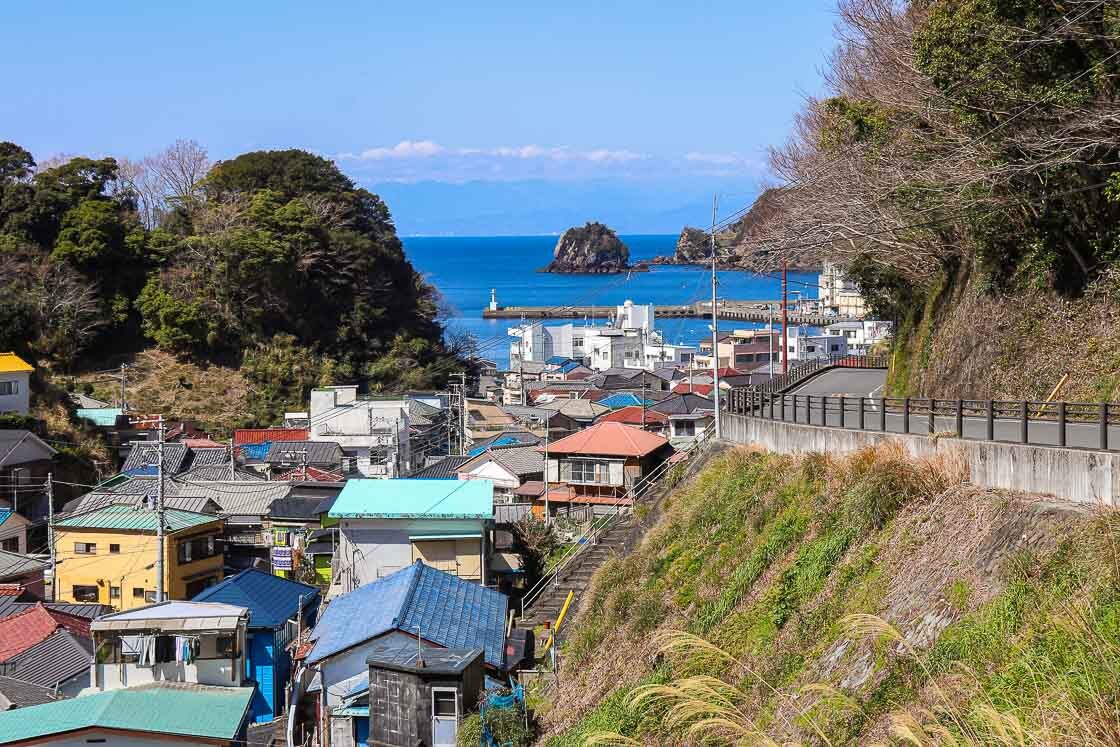
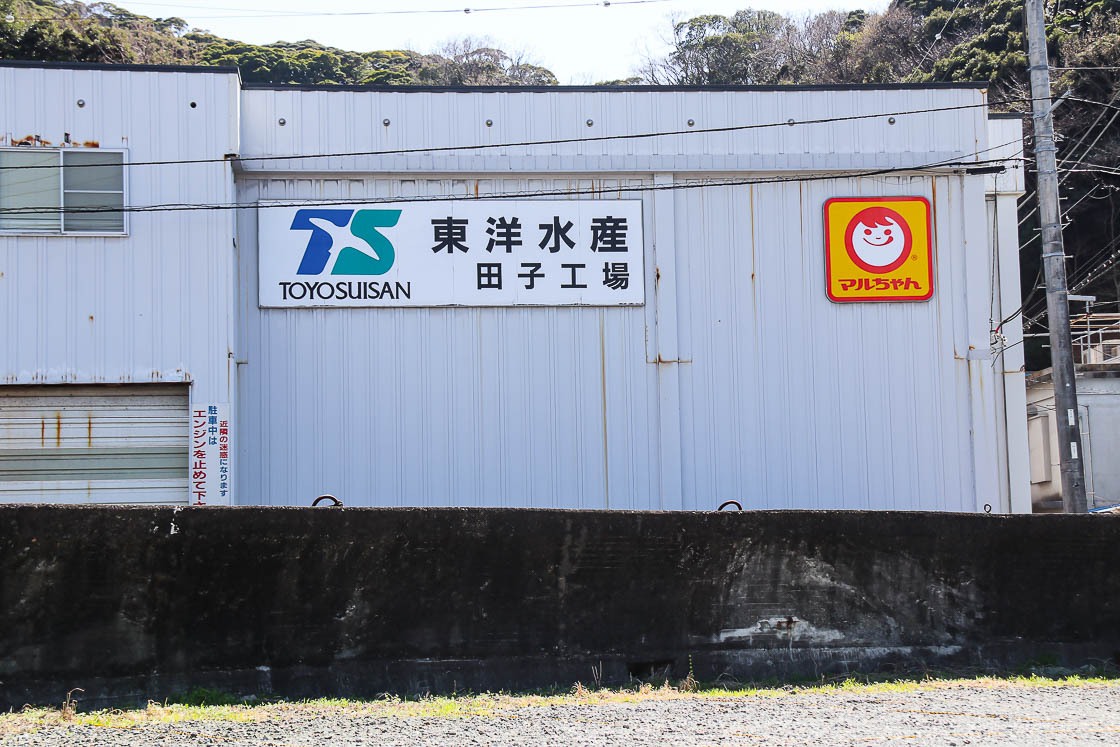
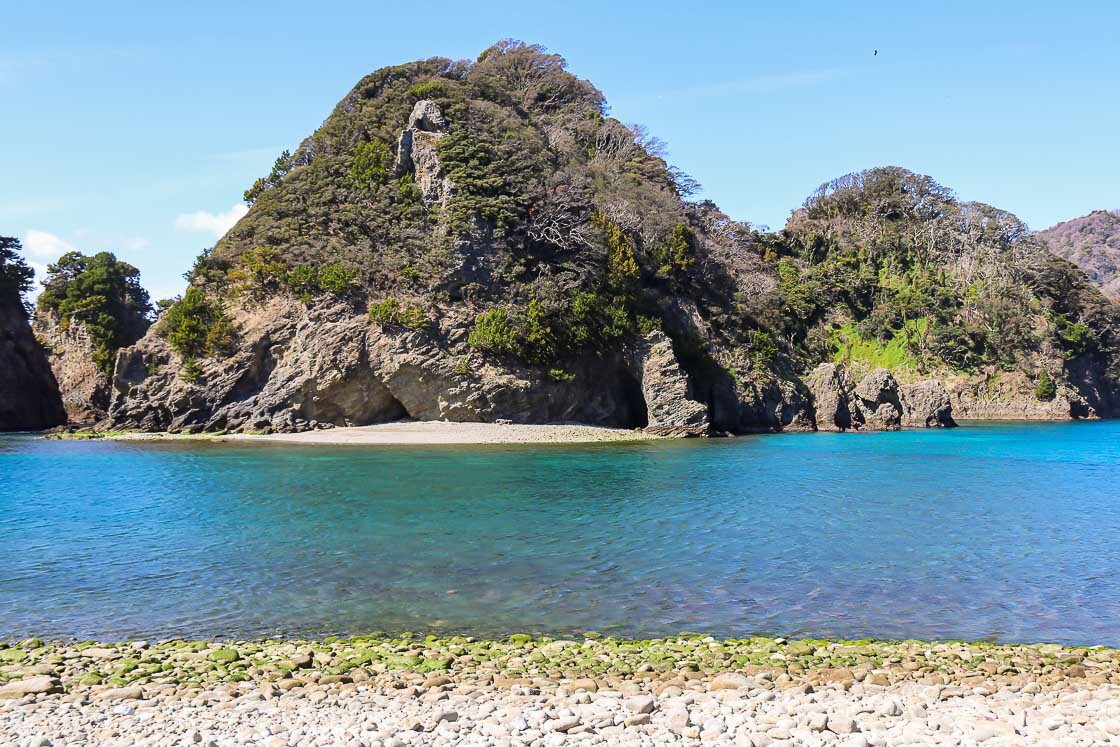
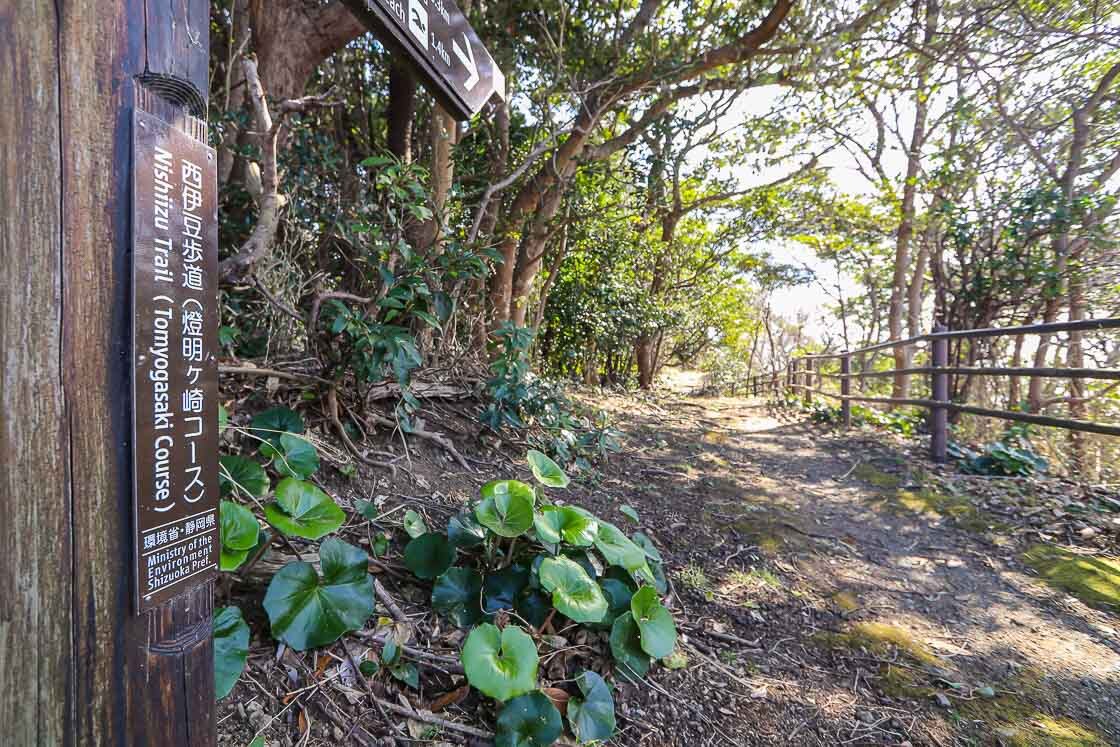
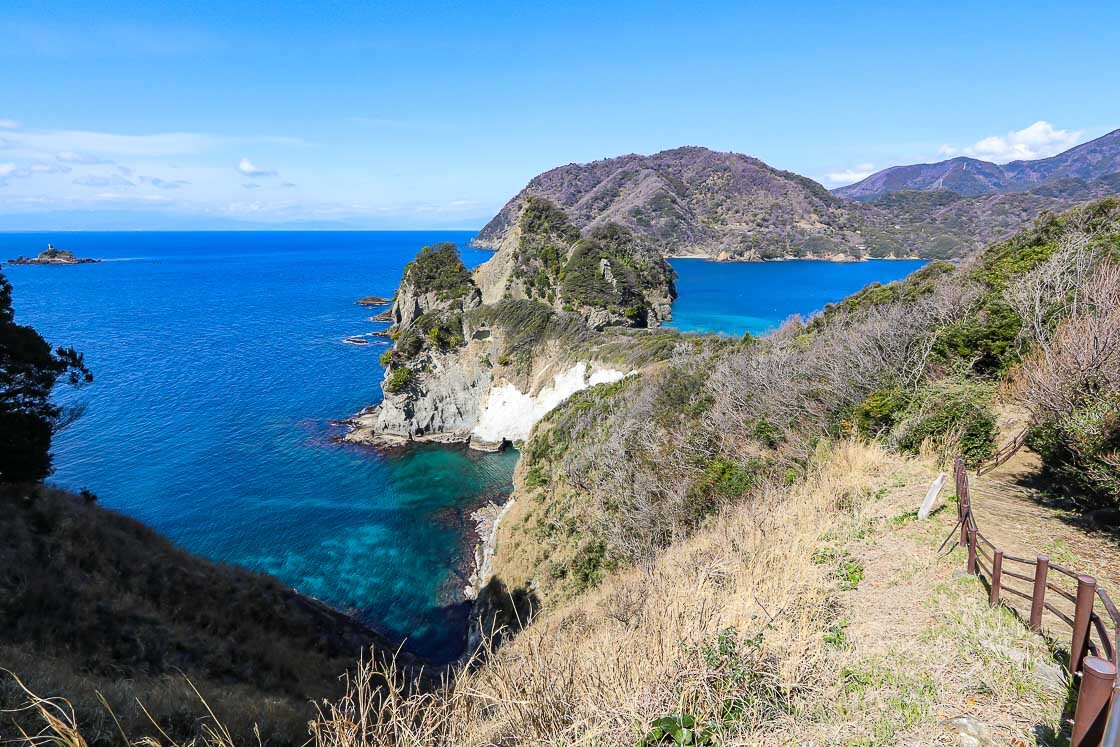
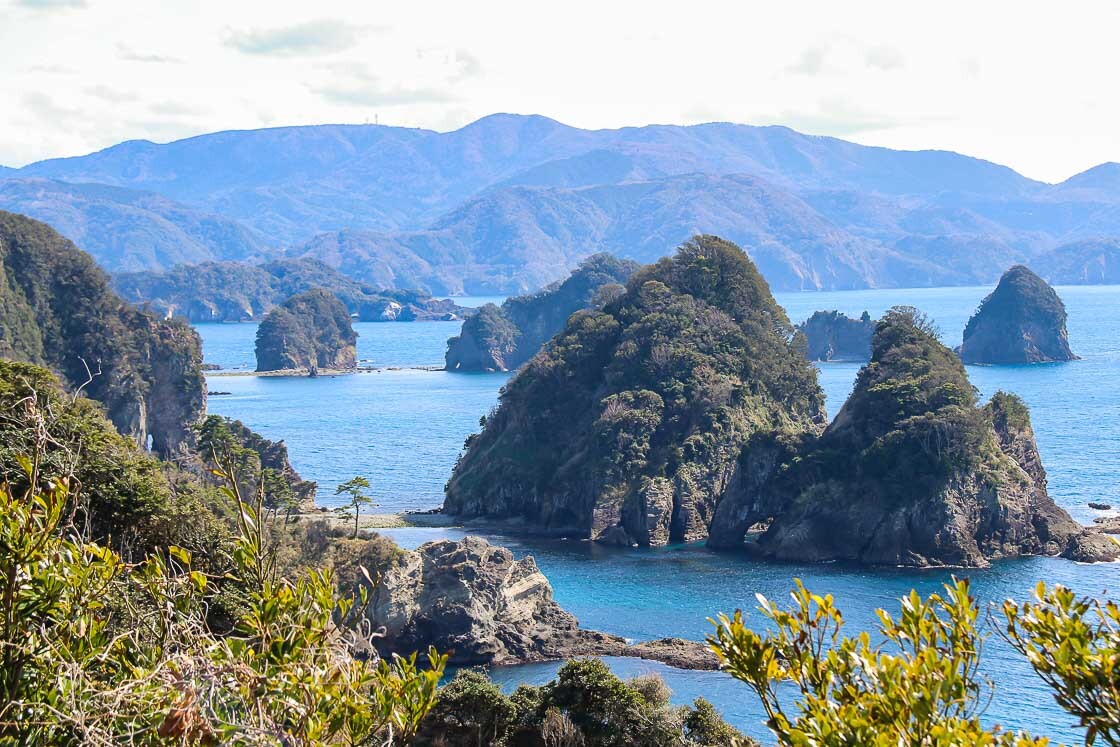
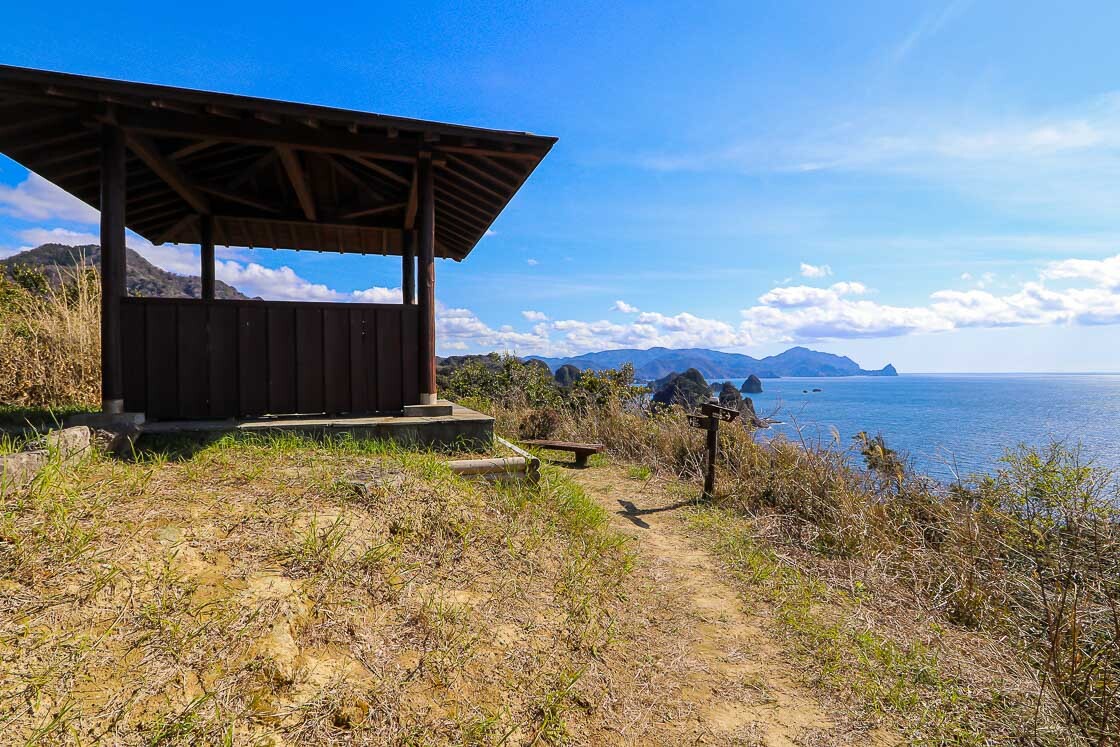
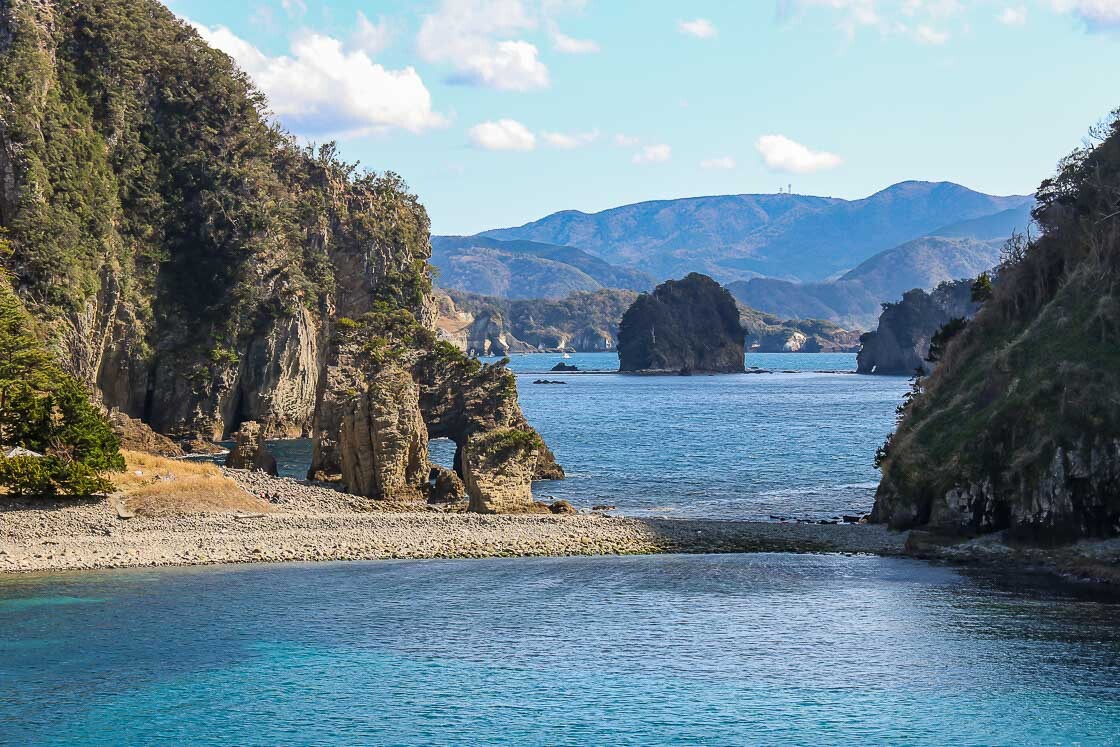
.
Day 3: Tombolo, tidal island and local wasabi
My last day in Nishiizu was spent exploring Sawada, another port town south of Dogashima, then returning to Dogashima to walk on a stone spit and have lunch before heading home. After checking out, I took the hotel shuttle to the Tourist Information Center to leave my bag, like I did on the first day. Then I walked about ten minutes south to Sawada.
The main attraction in Sawada is its open air hot spring baths atop a white rock cliff, which I saw on the sightseeing cruise on the first day. The hot spring baths are separated by gender and offer an unobstructed view of the ocean and boats that pass in front. Additionally, the baths are also a unique place to see sunsets, which Nishiizu is known for.
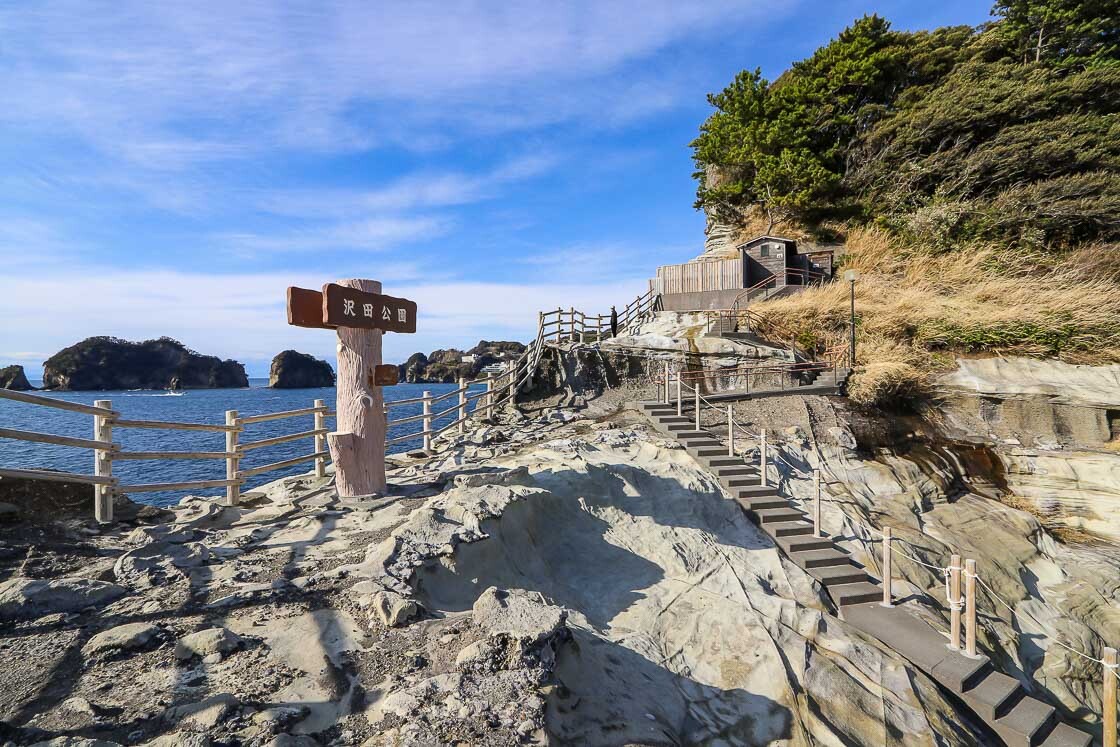
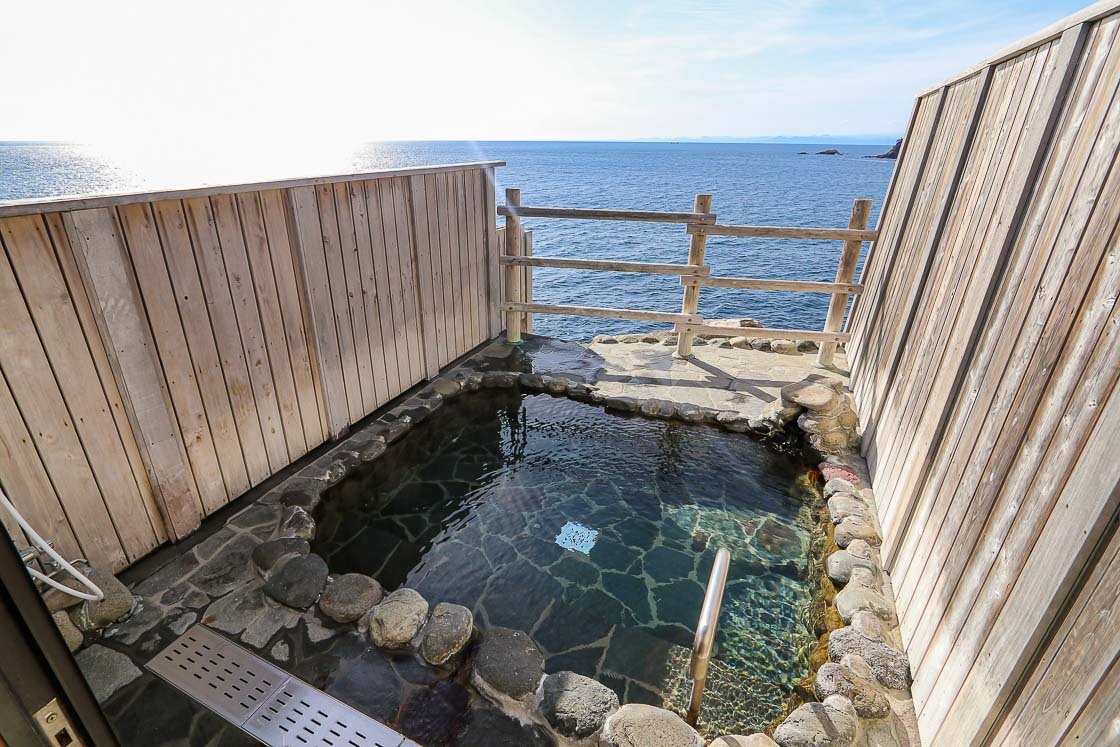
Since I was in Sawada, I went for a walk along the port and dropped by Hanbata Market. Visitors will find local produce and seafood as well as souvenirs at Hanbata Market. I saw shiokatsuo and shaved katsuobushi from Kanesa Katsuobushi, wasabi, which is locally grown in the mountainous interior of Nishiizu, and a couple of Japanese spider crabs – a local Nishiizu specialty – known for their long legs and being the biggest crabs in Japan.
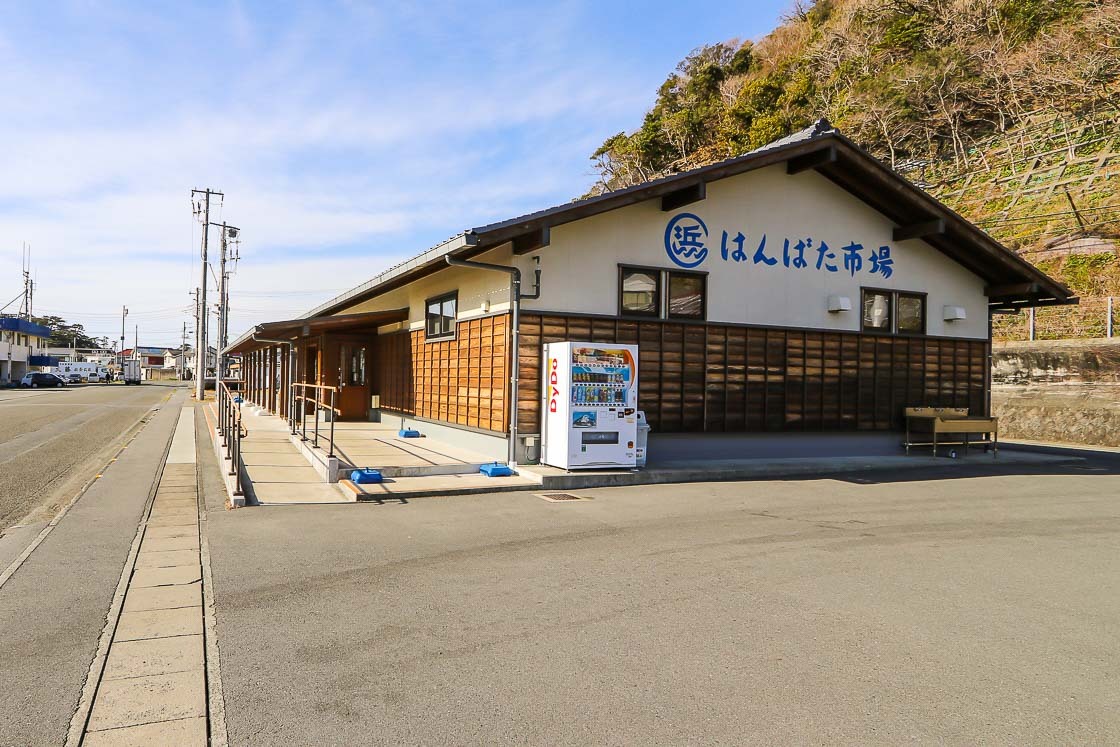
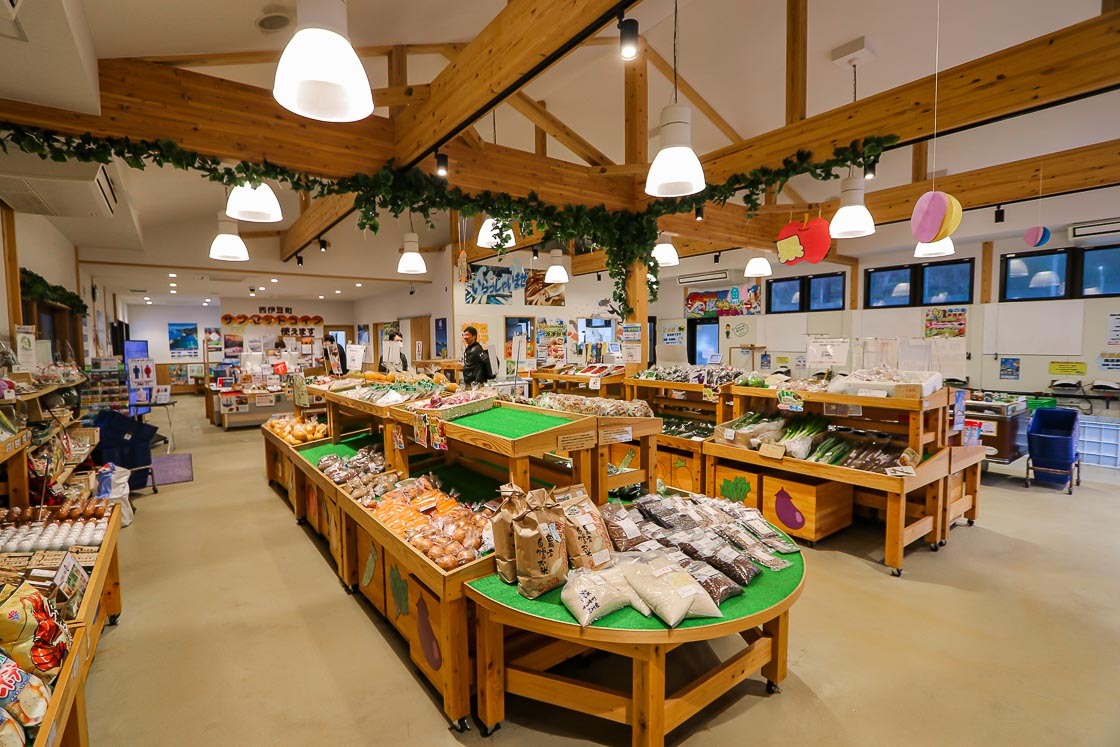
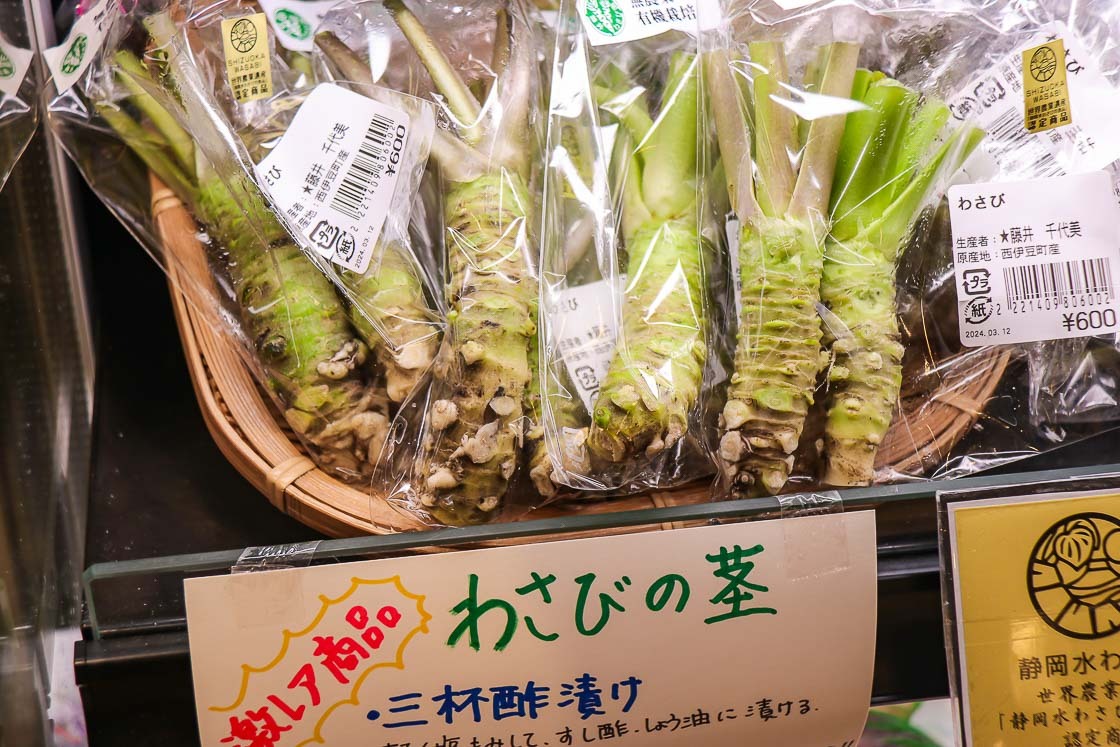
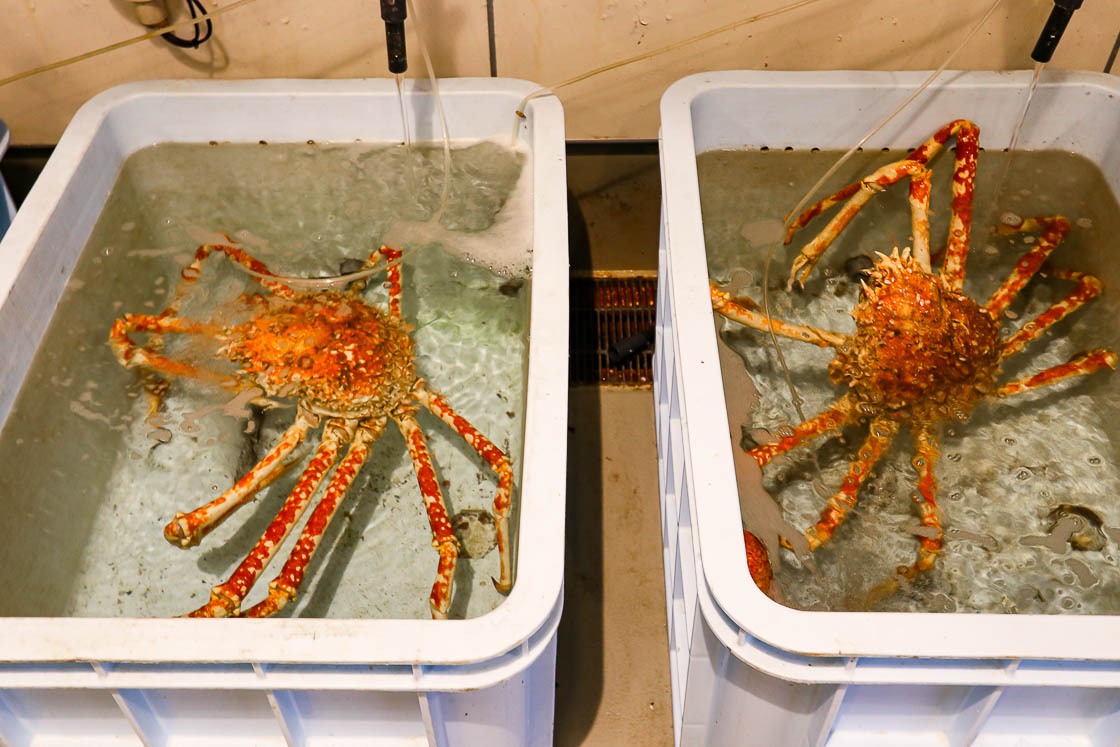
I took the bus from Sawada to Sebama, the bus stop nearest to the Dogashima Tombolo, my last sightseeing spot for the day. The isthmus can only be crossed when the tide is low, and it would be wise to check the tide times before attempting the crossing. Don’t be that person who gets stuck with no way to return when the tides rise! Crossing the tombolo is a novel activity as it can be done only when the tide is low during daylight hours, which happens at different times on different days. Check the tidal information here for the best chances to cross the tombolo.
Before leaving Nishiizu, I went to Dogashima Shokudo, a local restaurant serving a variety of local dishes not far from the Tourist Information Center. I decided to go for the wasabi rice bowl, having seen the local wasabi at Hanbata Market earlier. A small piece of fresh wasabi was served for me to grate, then build my own rice bowl with the shaved katsuobushi (from Kanesa Katsuobushi of course) and dried seaweed. I initially thought that a tiny bit of wasabi would be sufficient lest it got too spicy, but freshly grated wasabi is not spicy at all. In fact, I thought it even had a slightly sweet aftertaste. I ended up grating the wasabi almost to the end, and enjoyed my very local rice bowl.
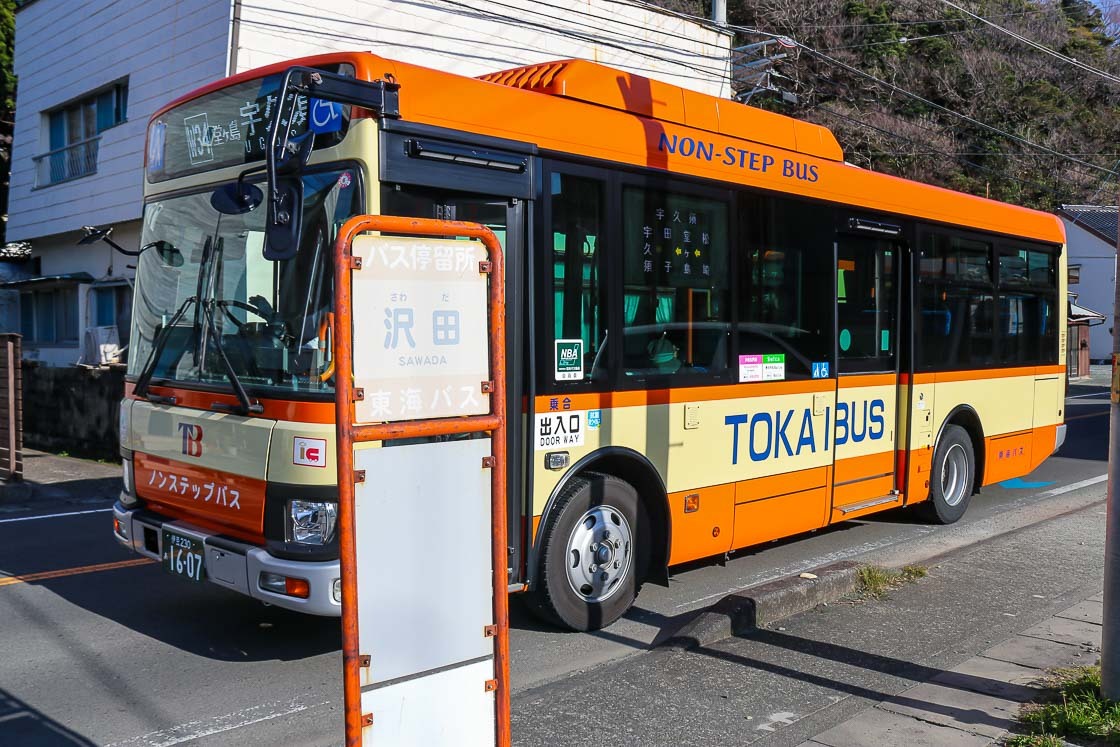
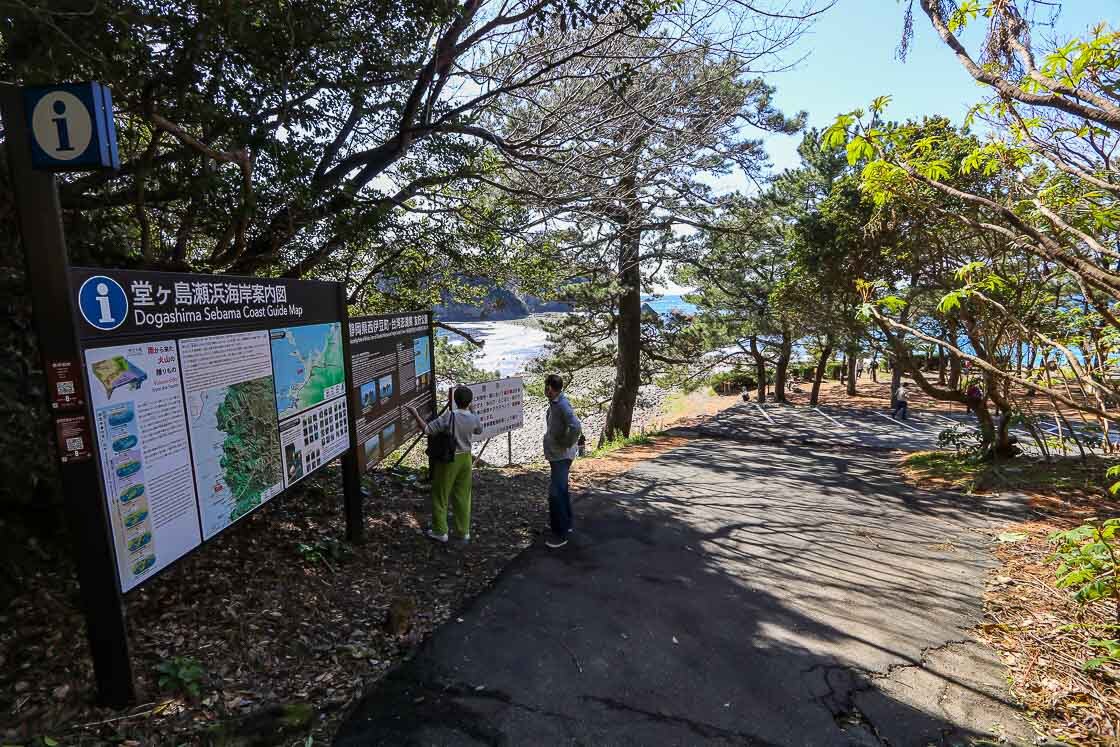
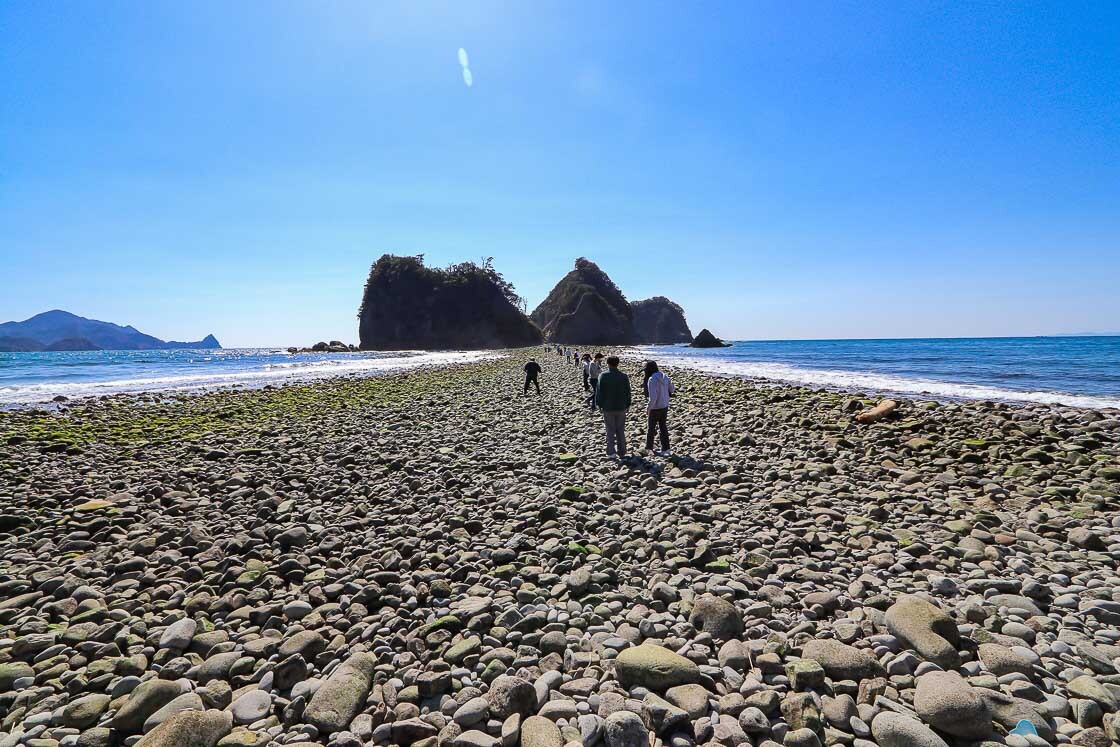
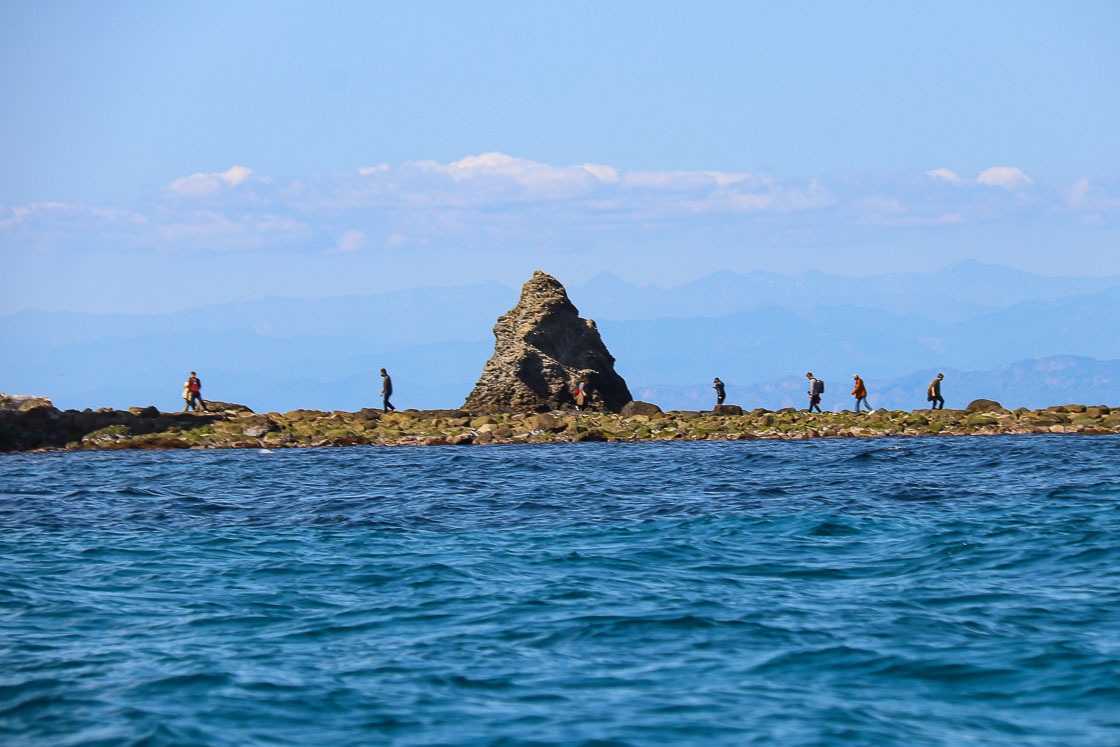
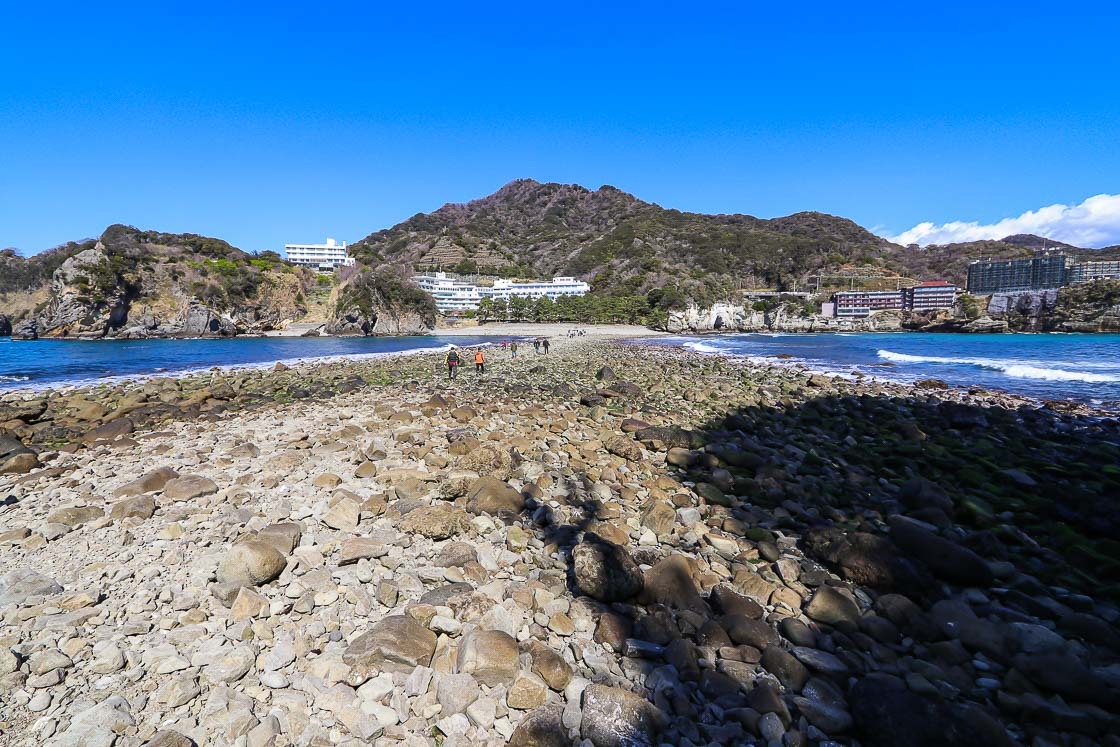
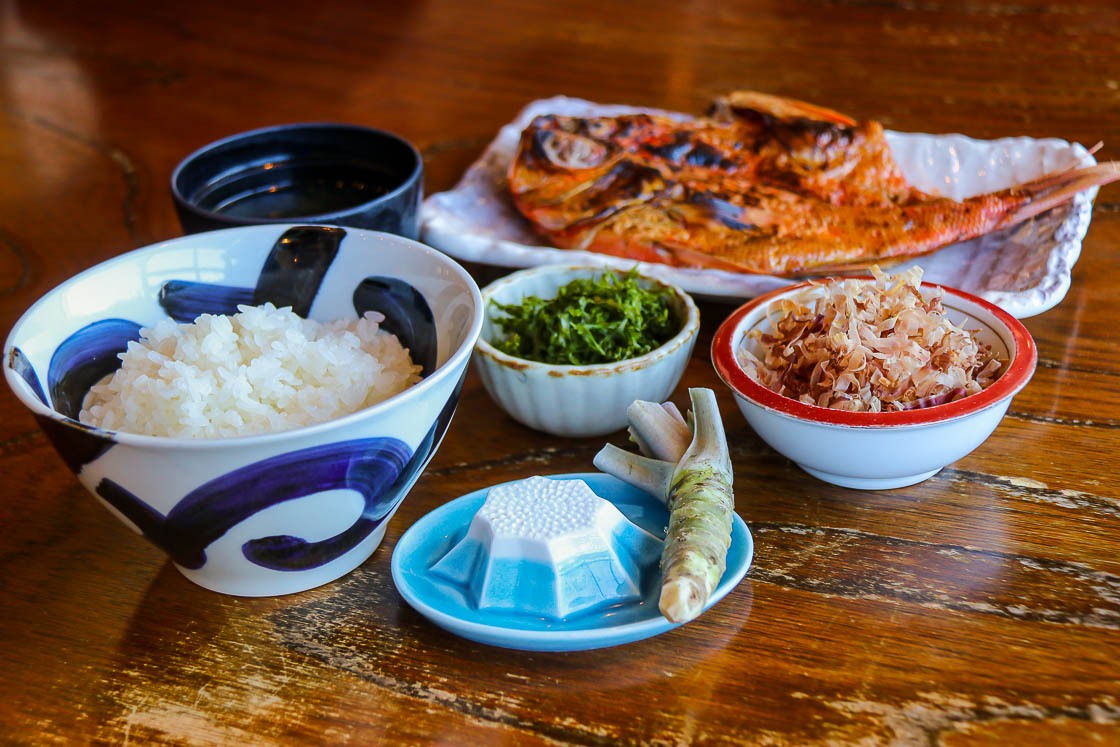
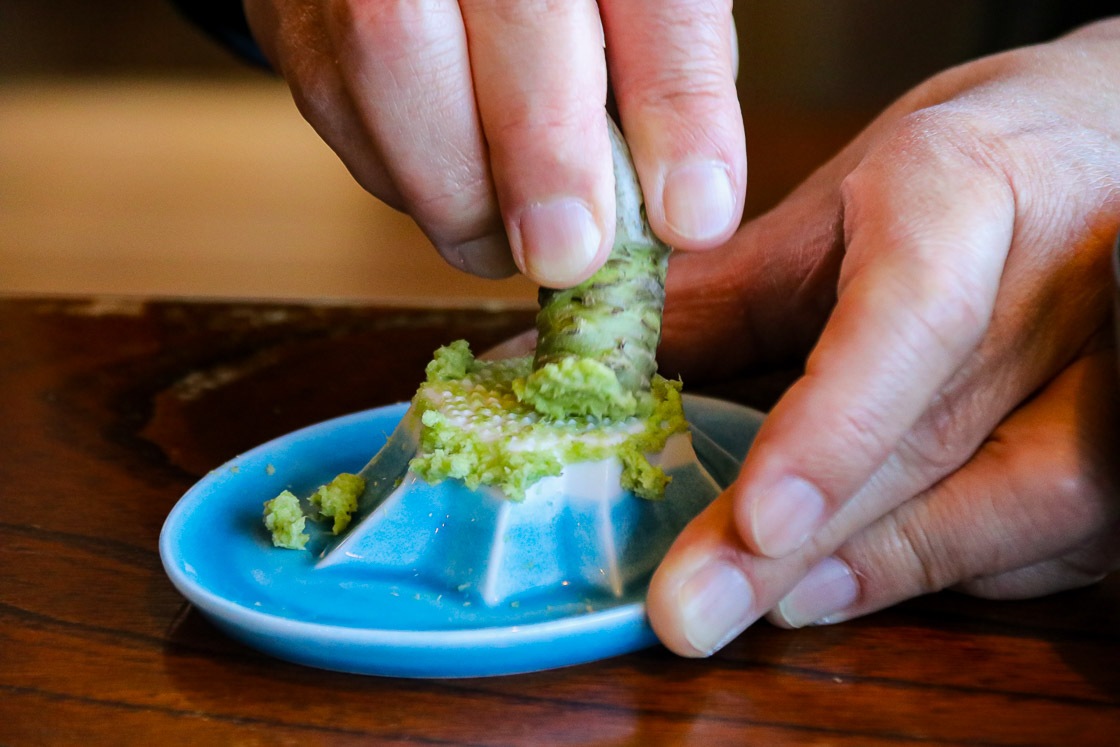
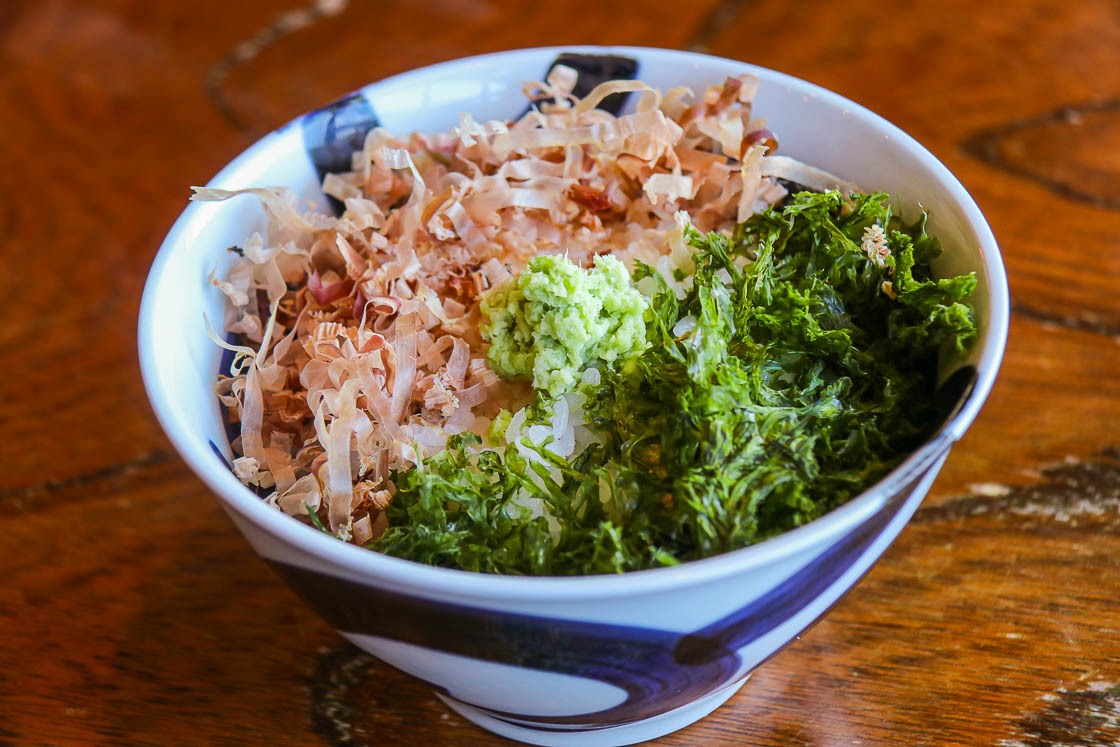
I had a great time exploring Nishiizu, and getting around by public transport forced me to travel at a slower pace, which was the kind of relaxing holiday I needed. Staying for three days is definitely the way to go for those who want a leisurely trip. All the spots I visited were relatively close to one another, and everyday included a nice walk, hot spring baths and delicious meals. One of the souvenirs I picked up was shiokatsuo as it is made only in Nishiizu, and I have plans to make my own furikake or rice seasoning with that.
How to get to and around Nishiizu
Dogashima is the main transportation hub of Nishiizu.
Take the Tokaido Shinkansen from Tokyo and get off at Mishima. Transfer to the Izuhakone Railway and take the local train to Shuzenji. Finally, take a bus bound for Matsuzaki and get off at Dogashima.
Digital bus pass for travel in the Izu Peninsula
Digital bus passes for unlimited use of buses on the Izu Peninsula are available for two consecutive days (4900 yen) or three consecutive days (5600 yen). These digital bus passes must be purchased online using a smartphone. Simply show the ticket page on your phone when getting off the bus. Using the 3-day pass for this trip offers some savings compared to paying the fare each time you ride the bus.
Average travel times by bus
- Shuzenji to Dogashima: 90 minutes
- Sebama to Tagogami (bus stop closest to Kanesa Katsuobushi): about 10 minutes
- Tagoiriguchi to Sebama (bus stop closest to the hotel): about 2 minutes
- Dogashima to Sawada (bus stop closest to Sawada hot spring baths and Hanbata Market): about 5 minutes
- Sawada to Sebama (bus stop closest to Dogashima Tombolo): about 5 minutes
